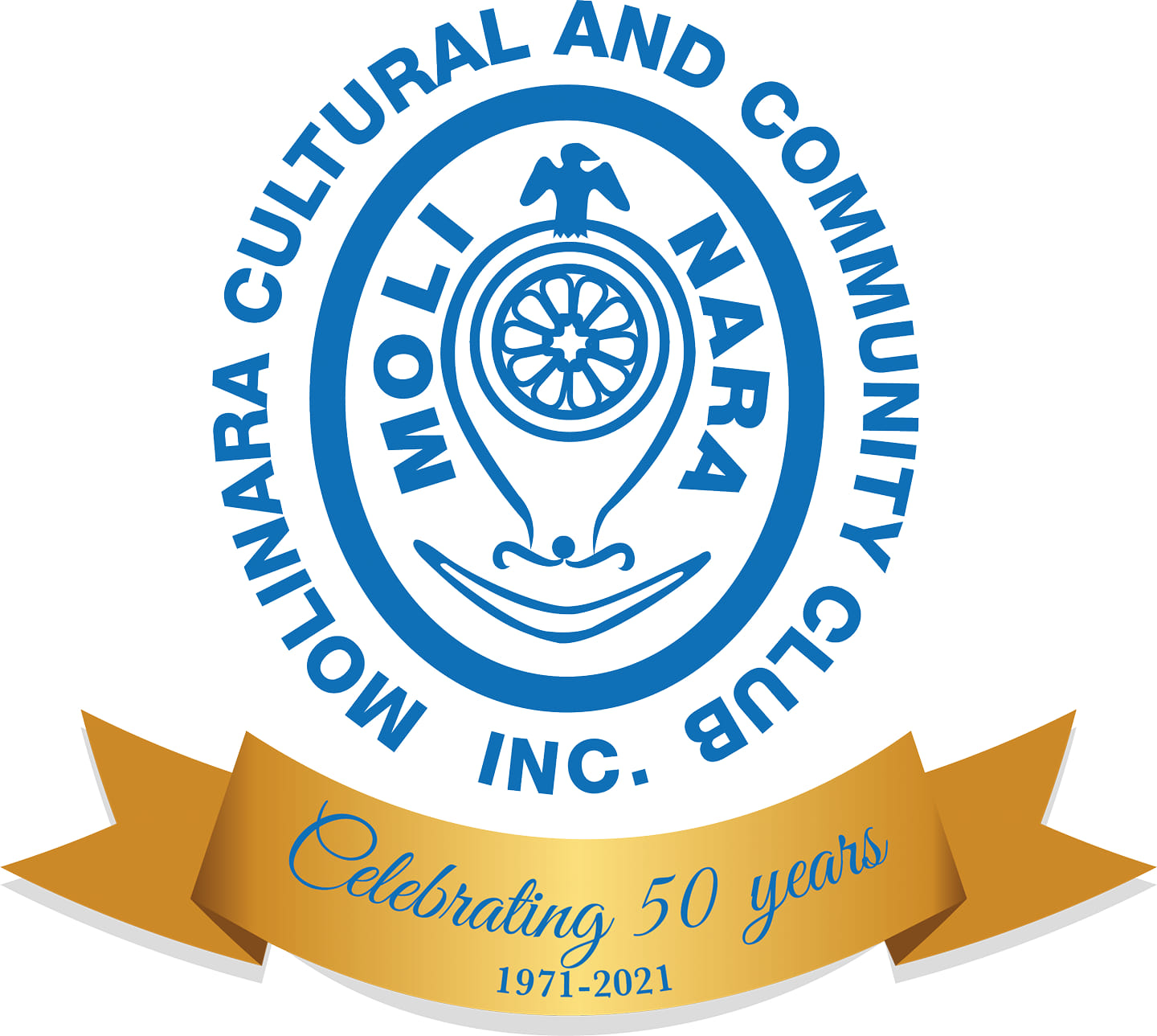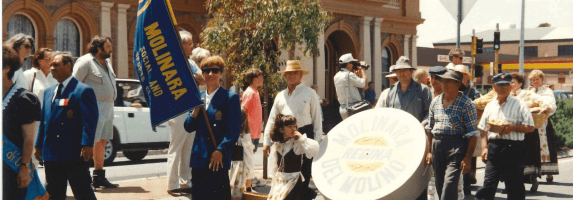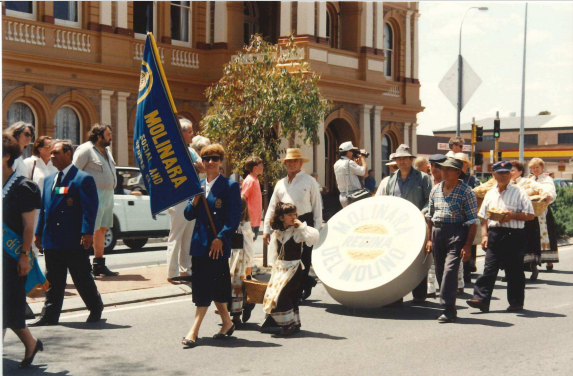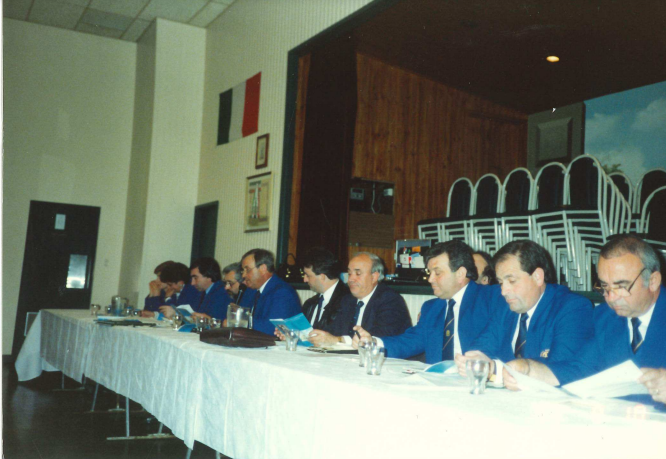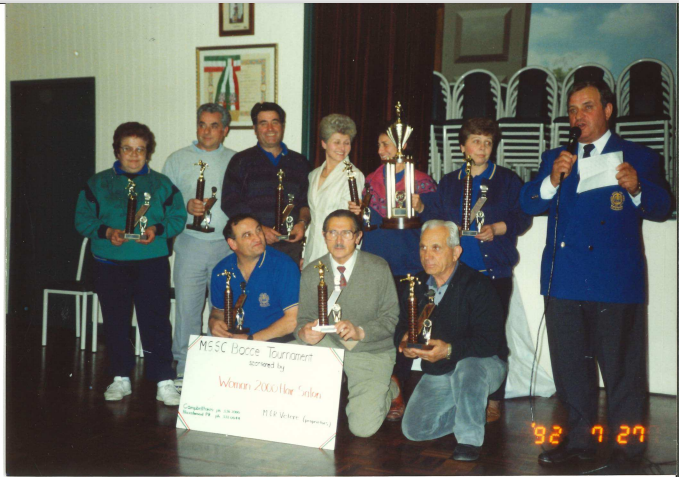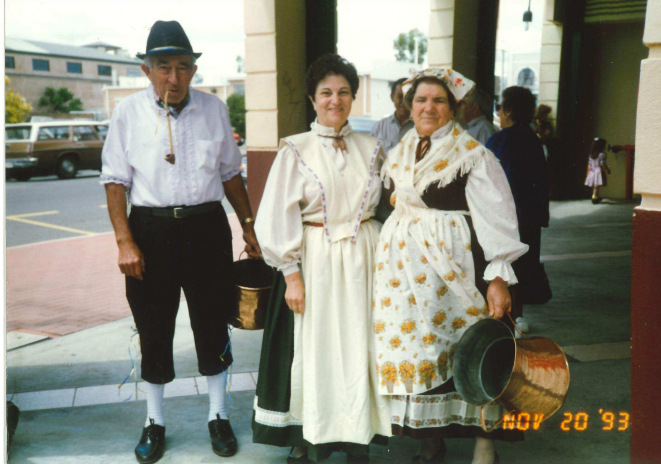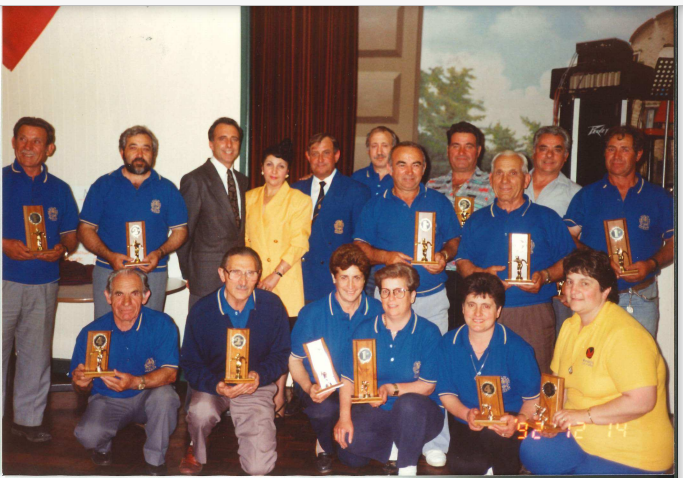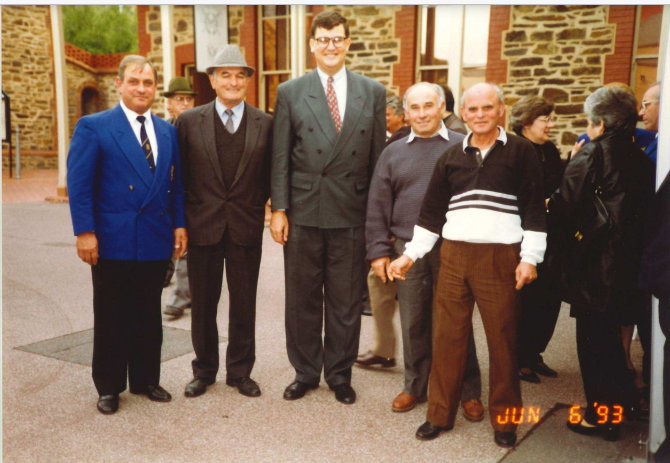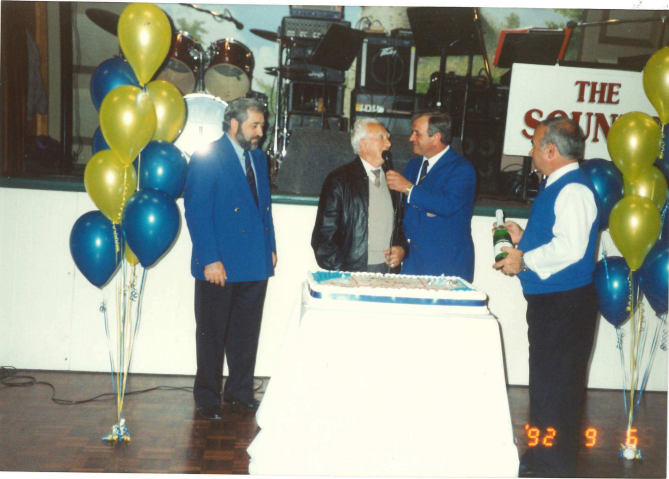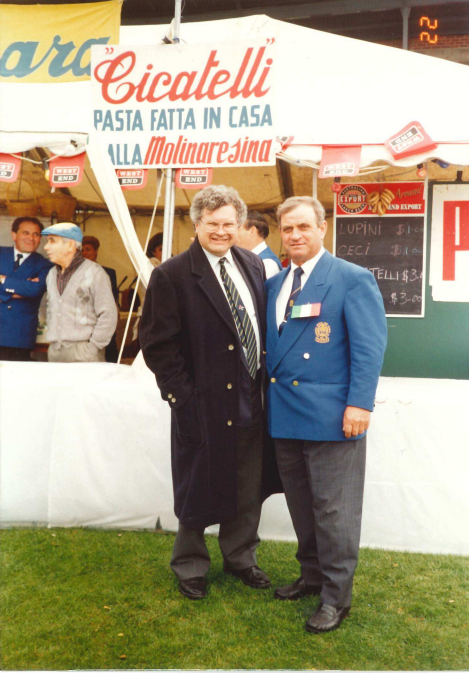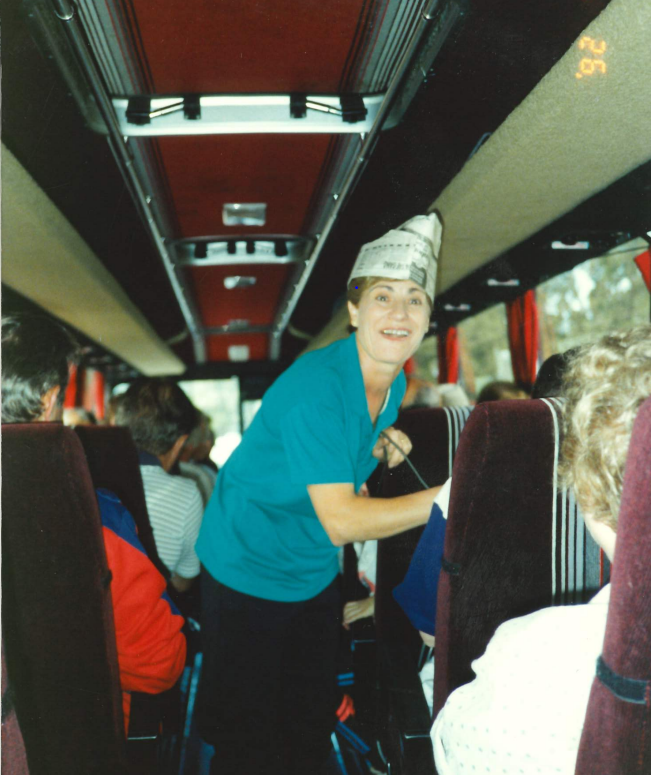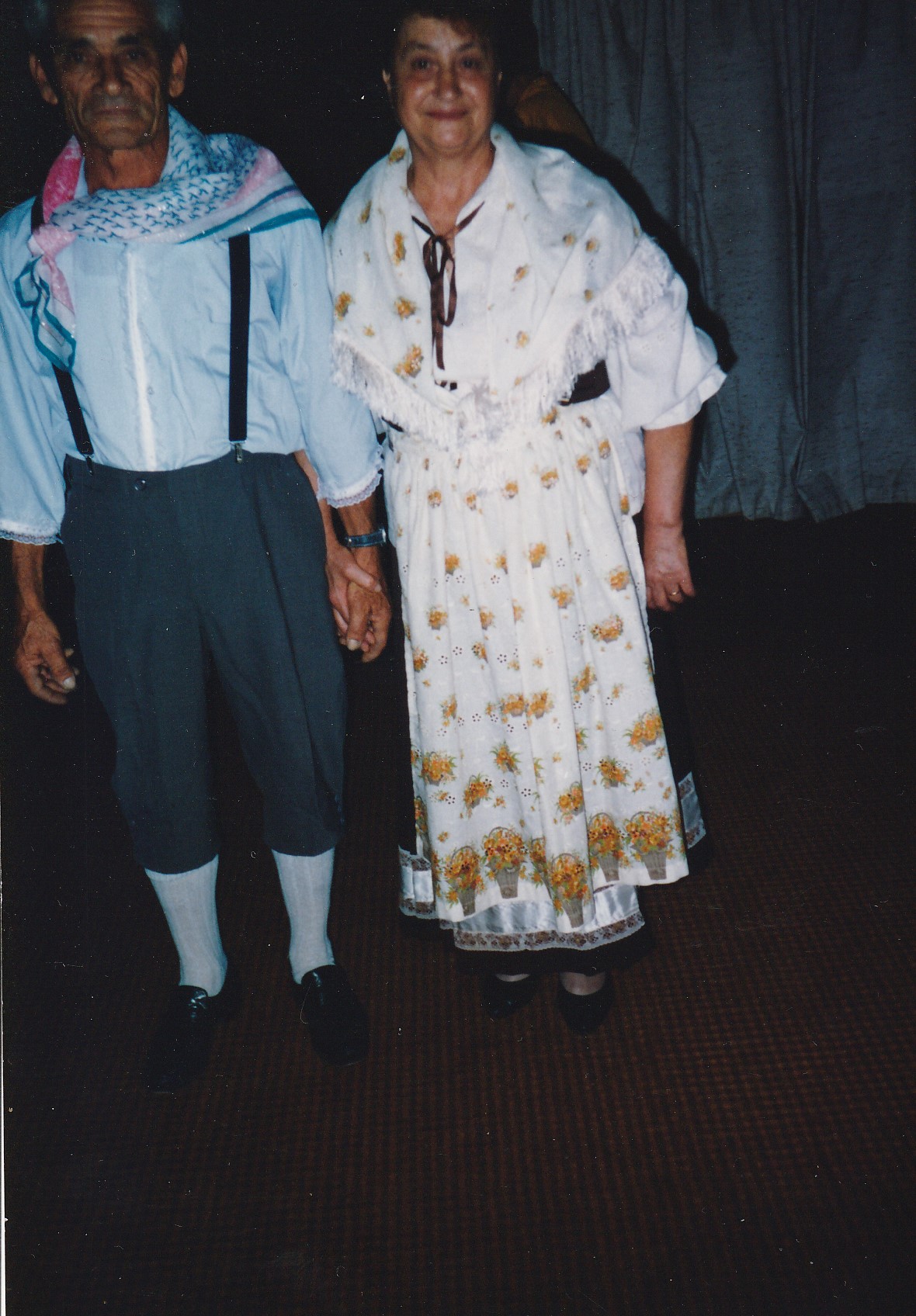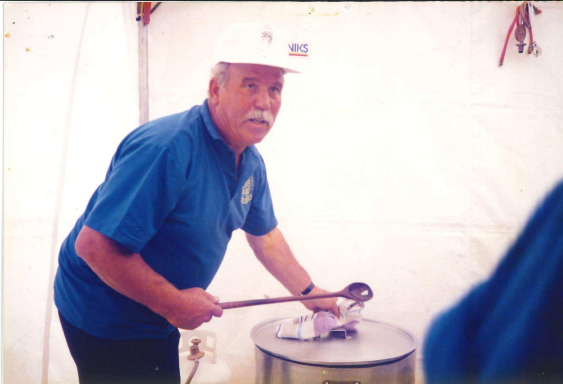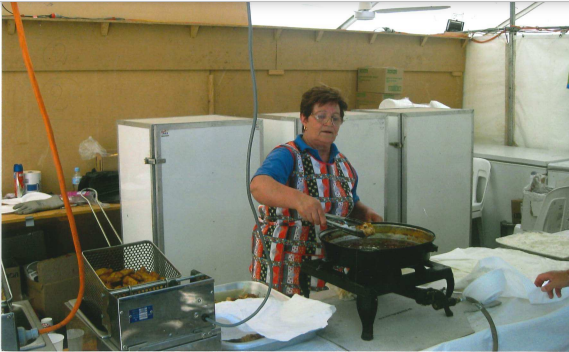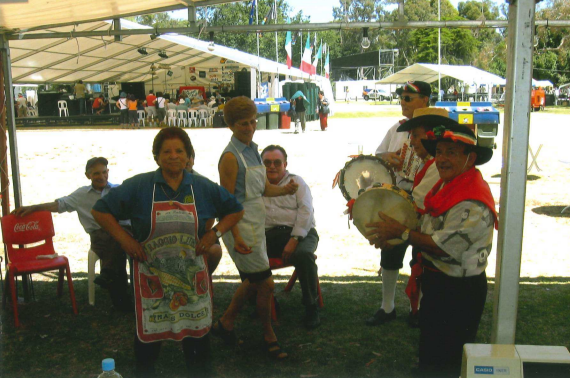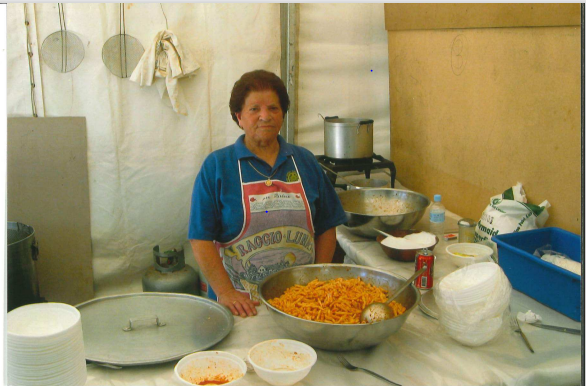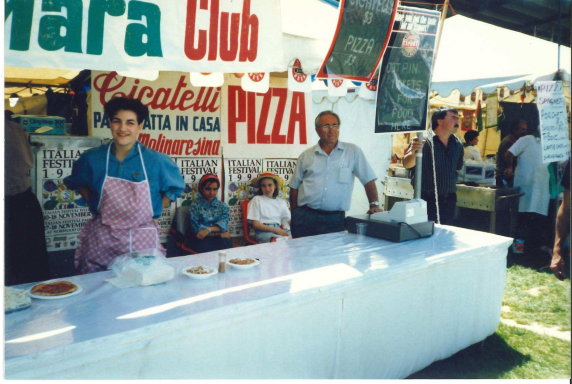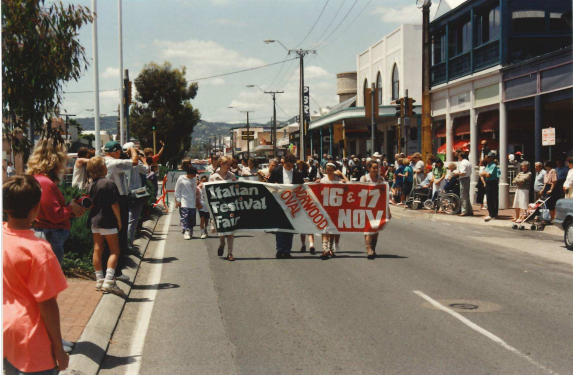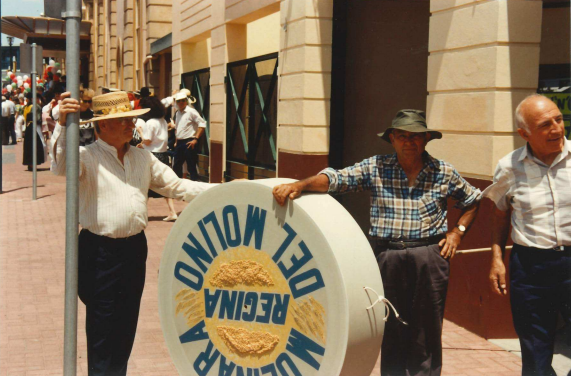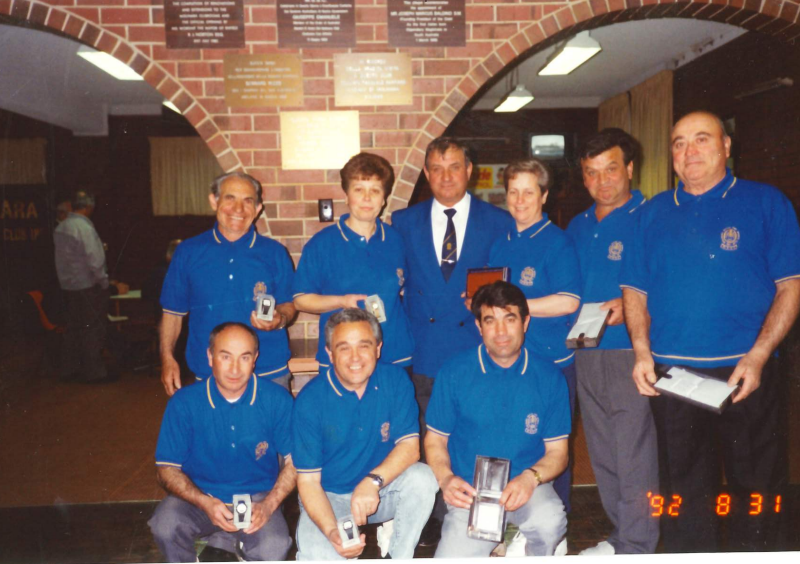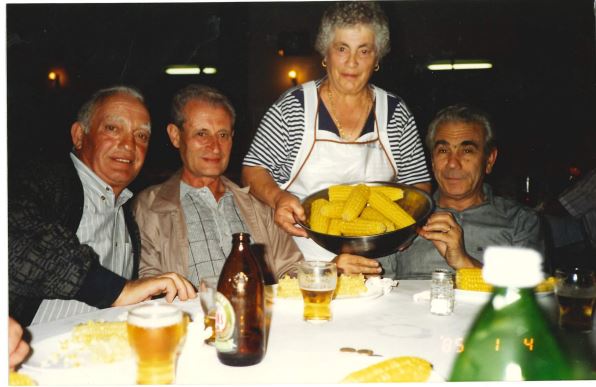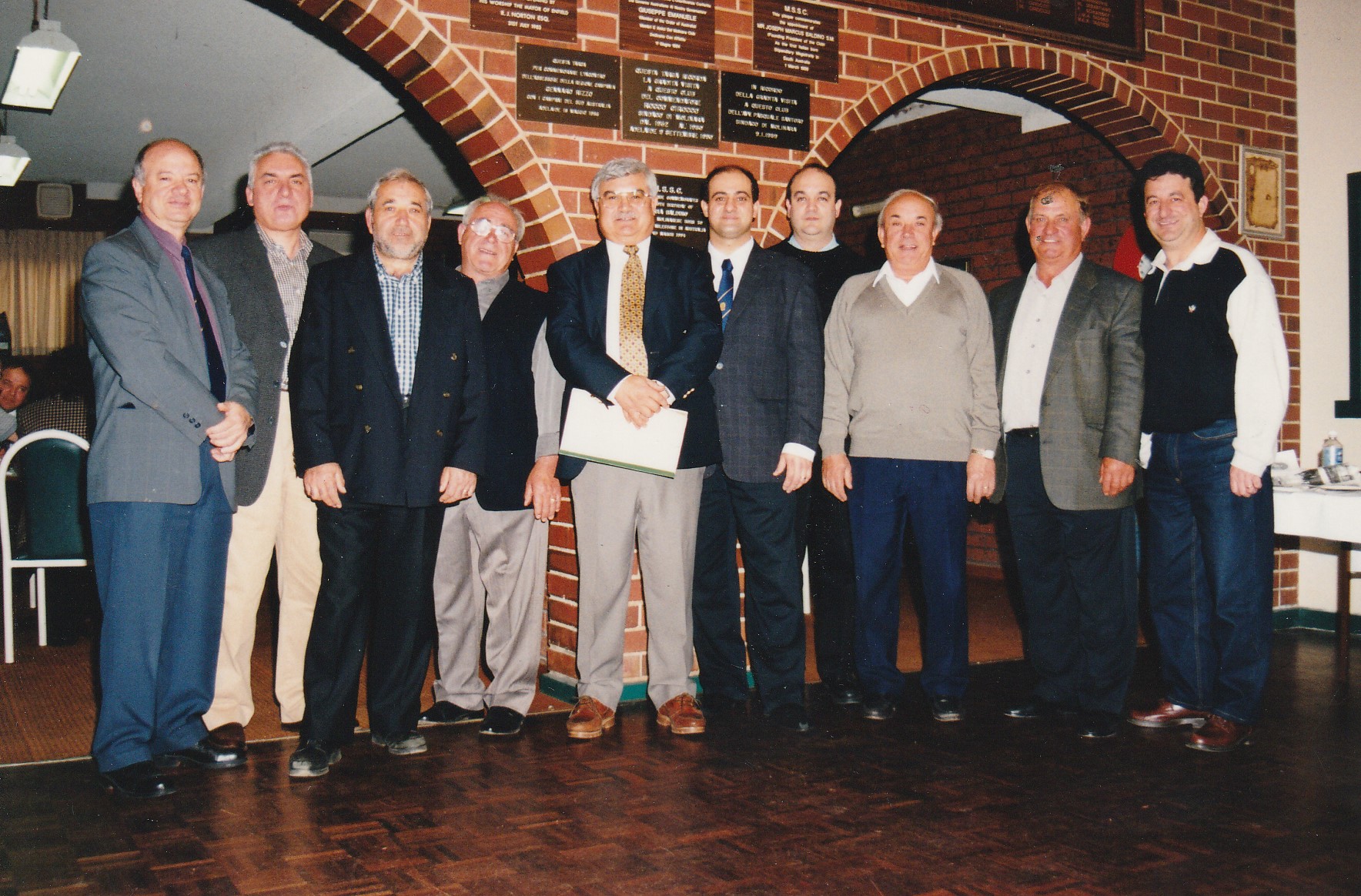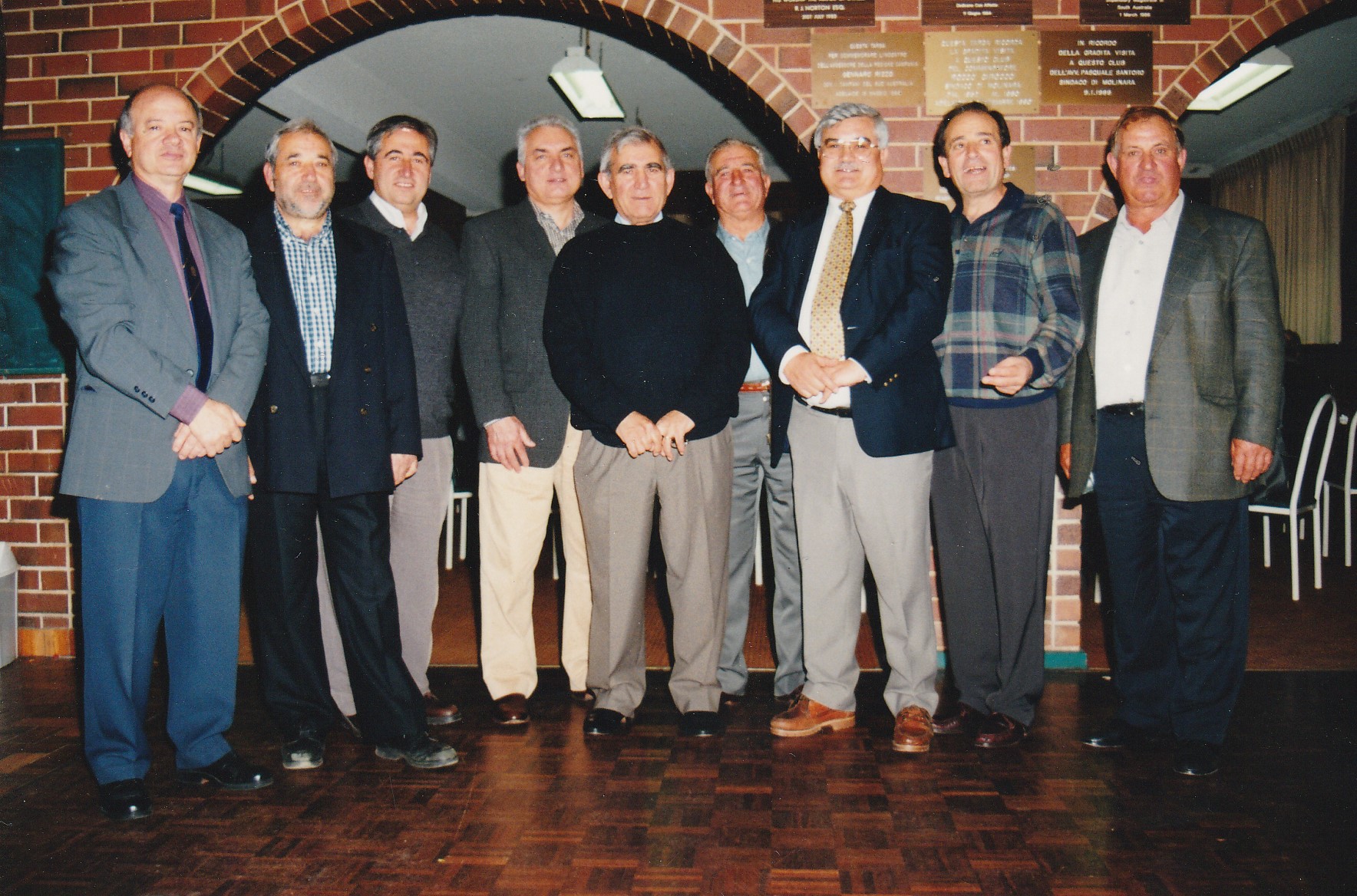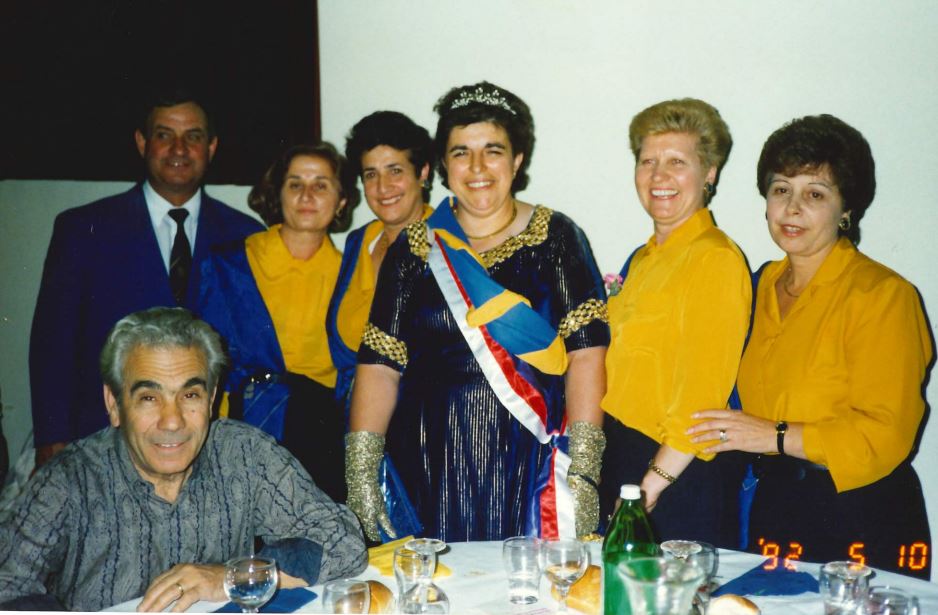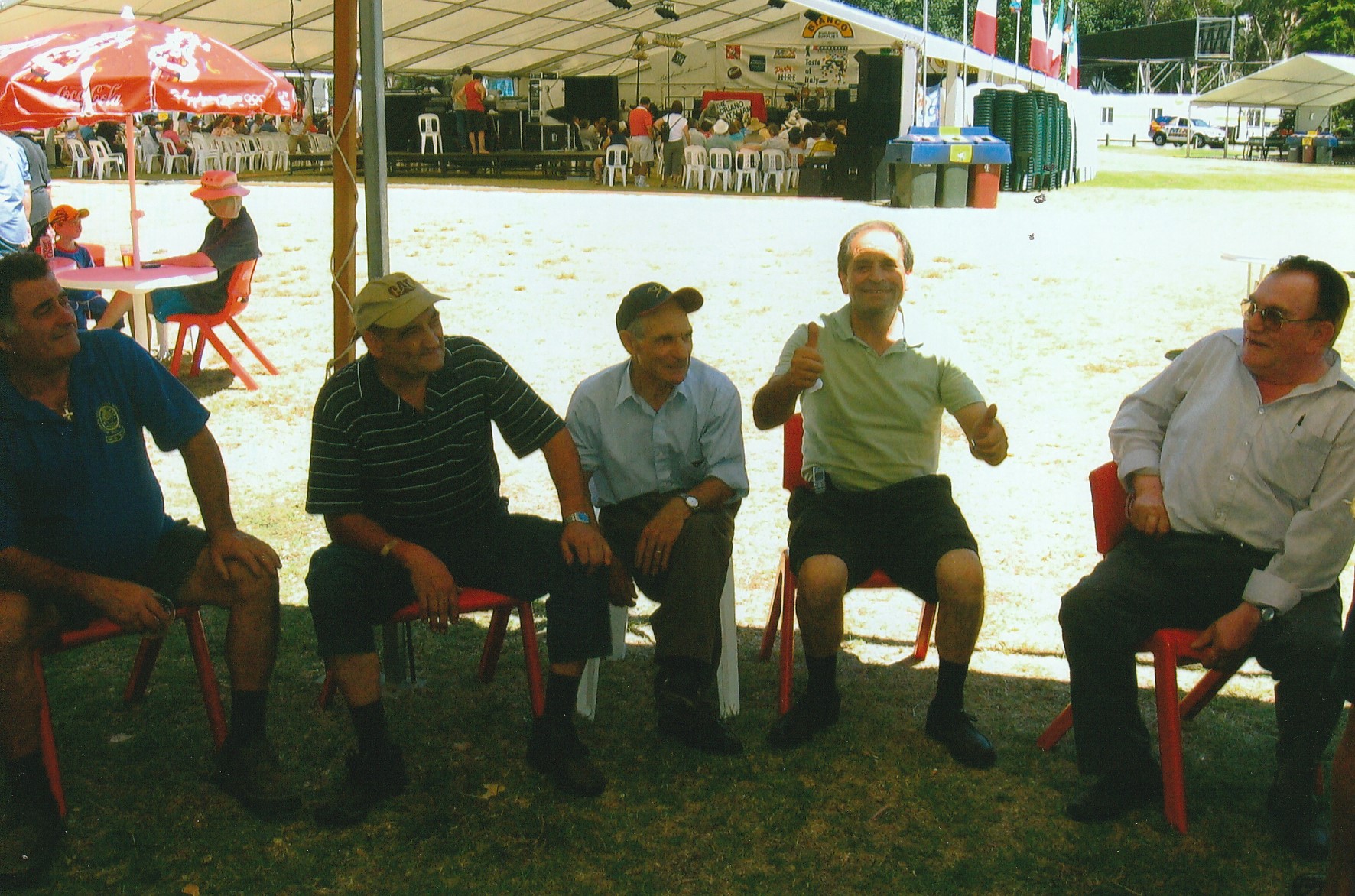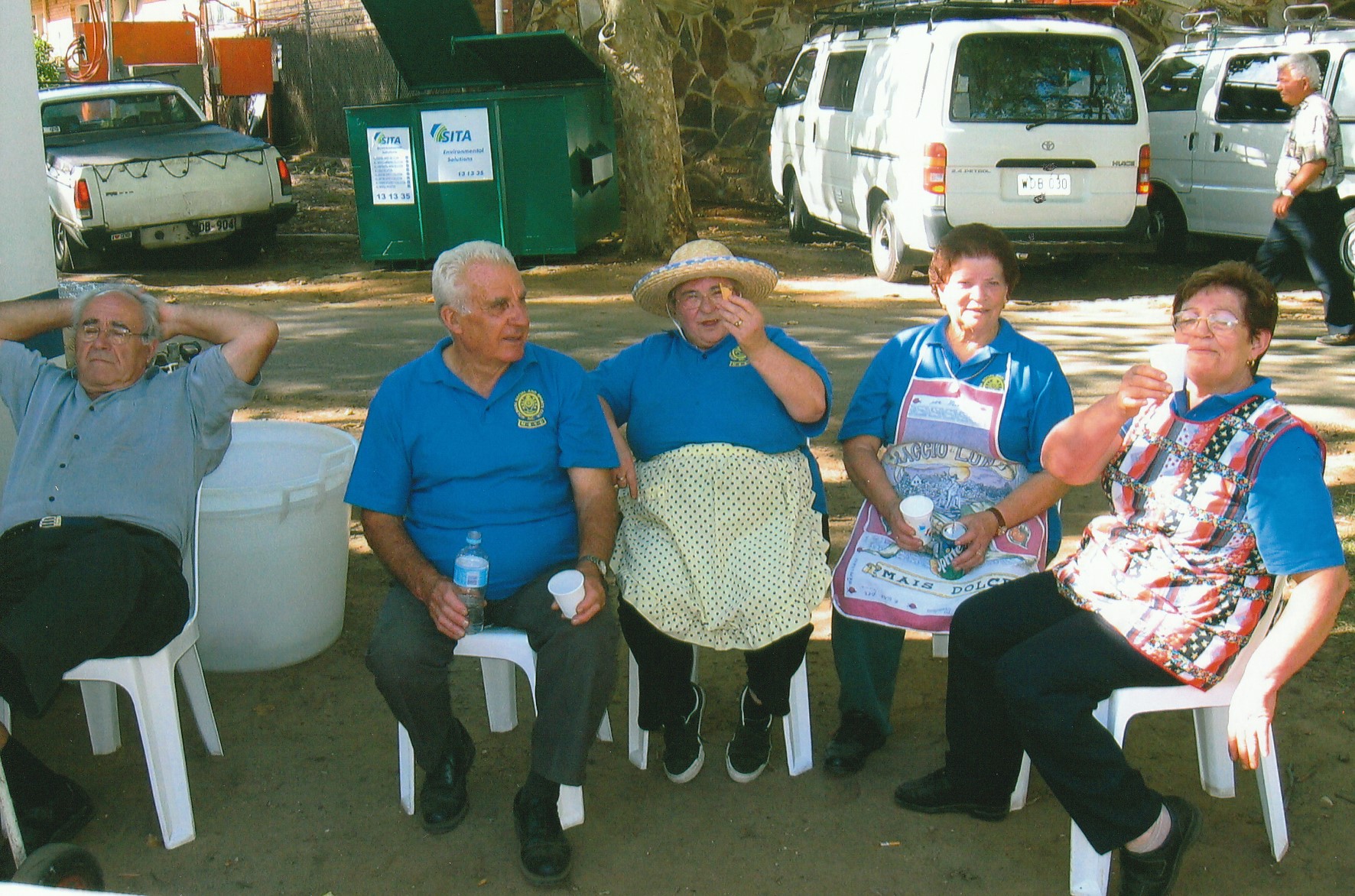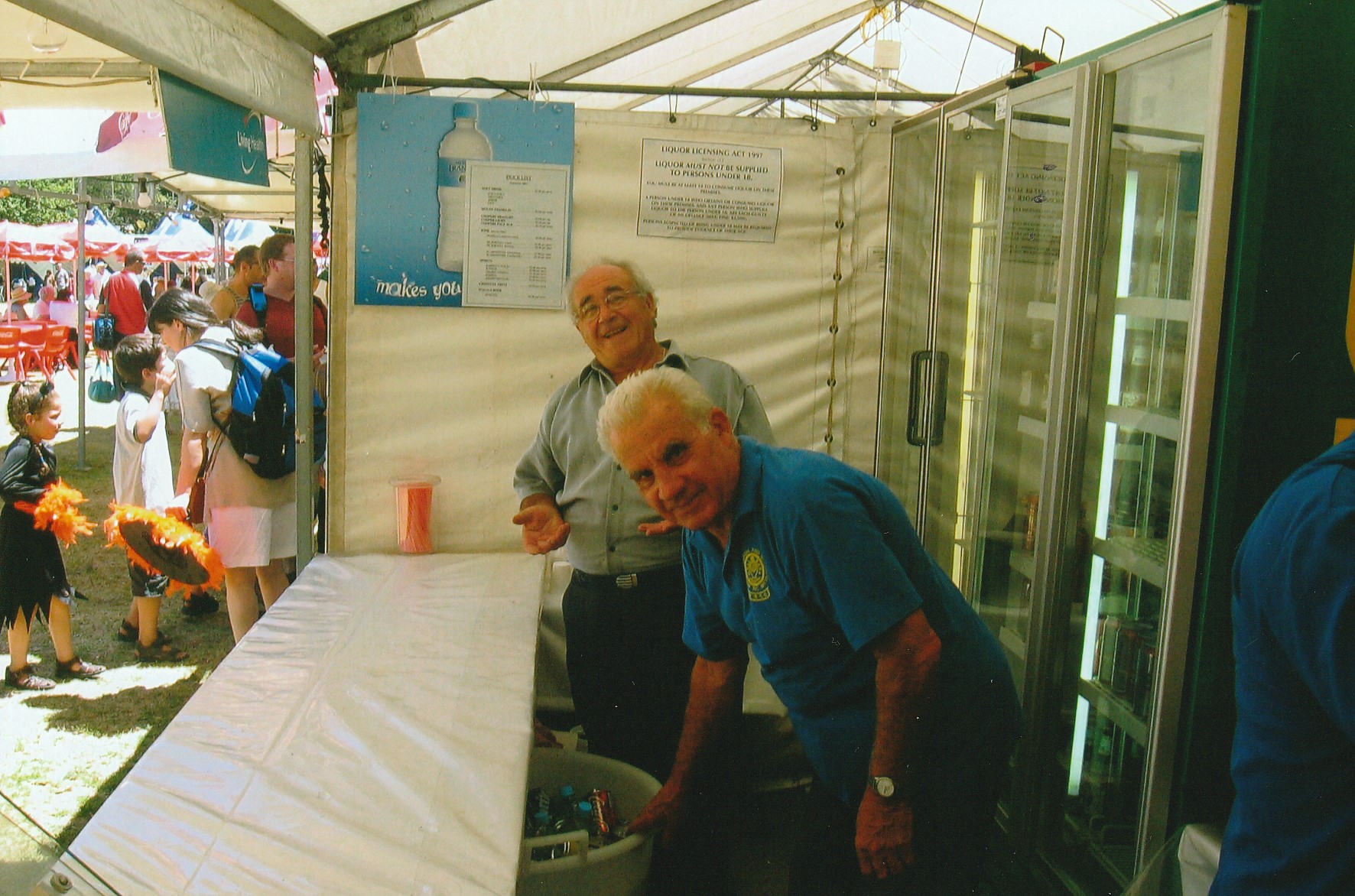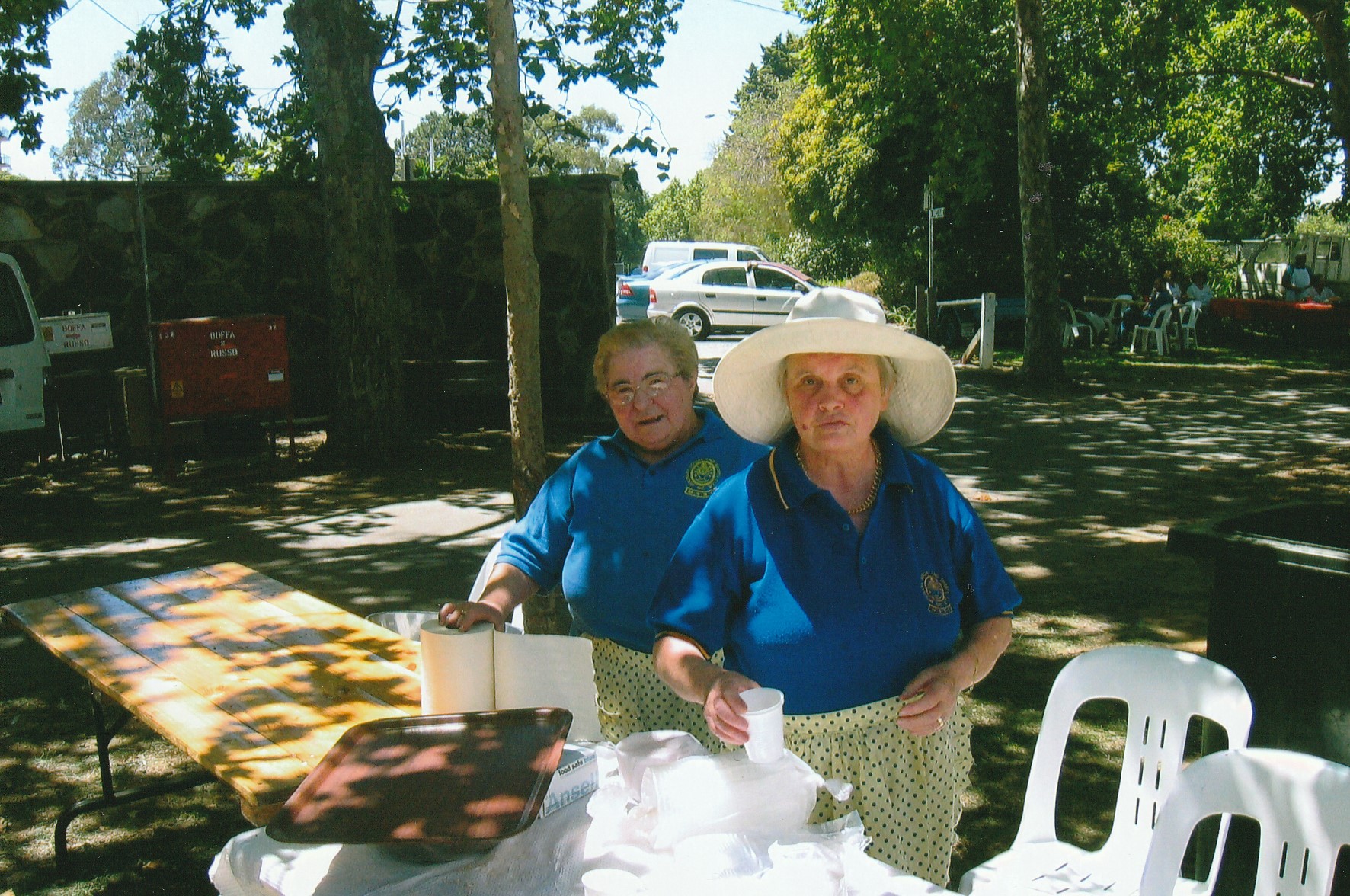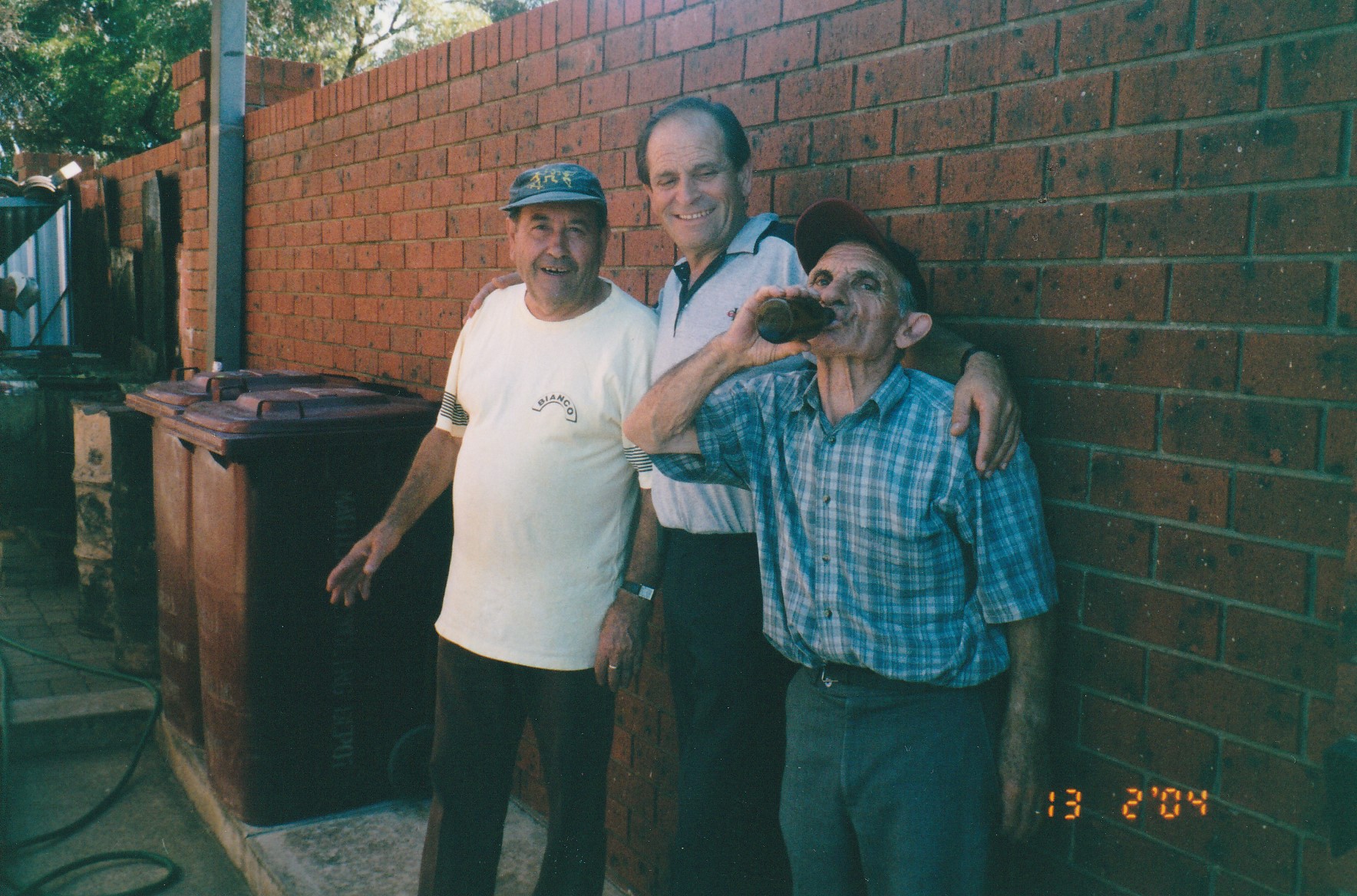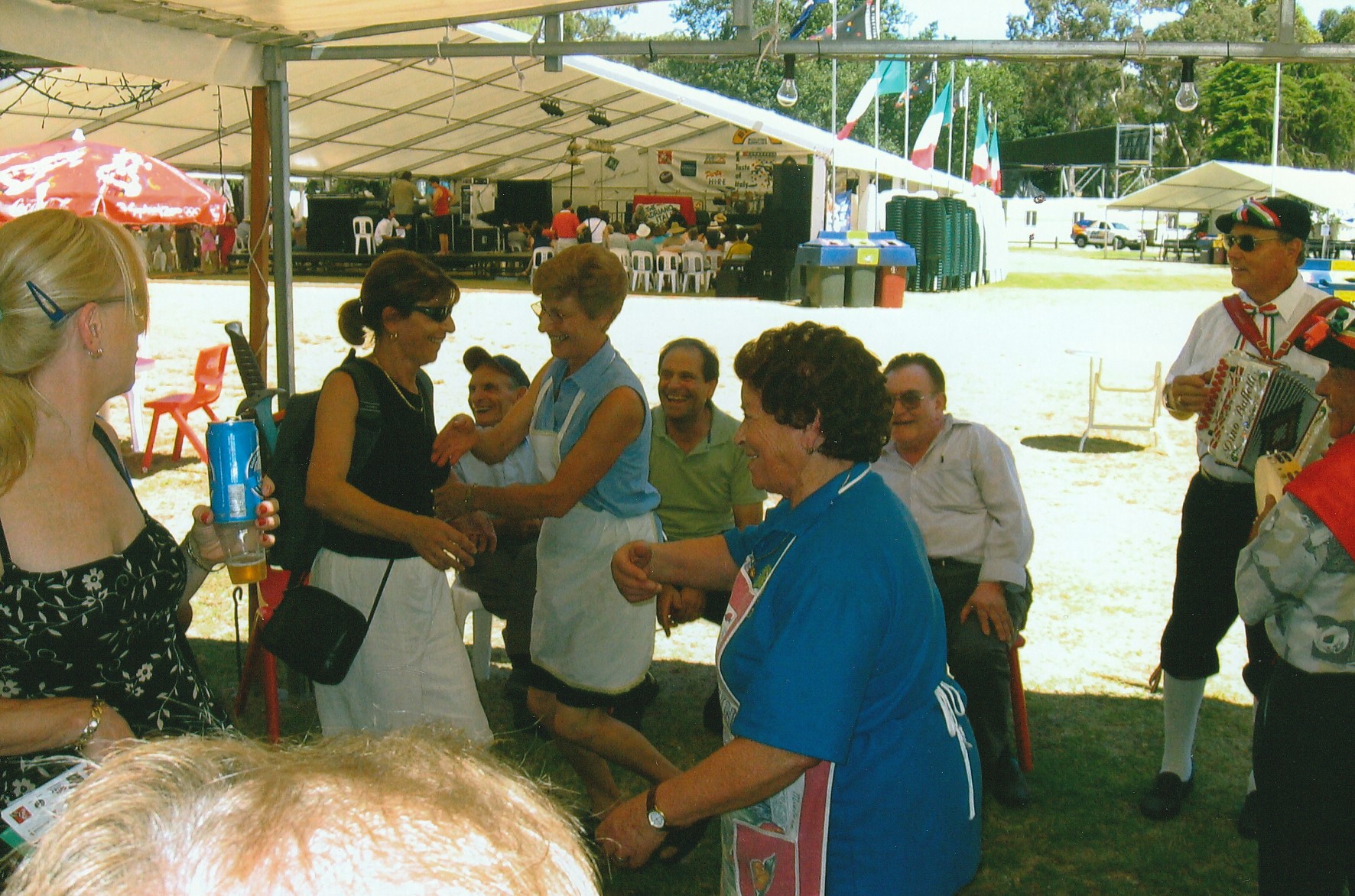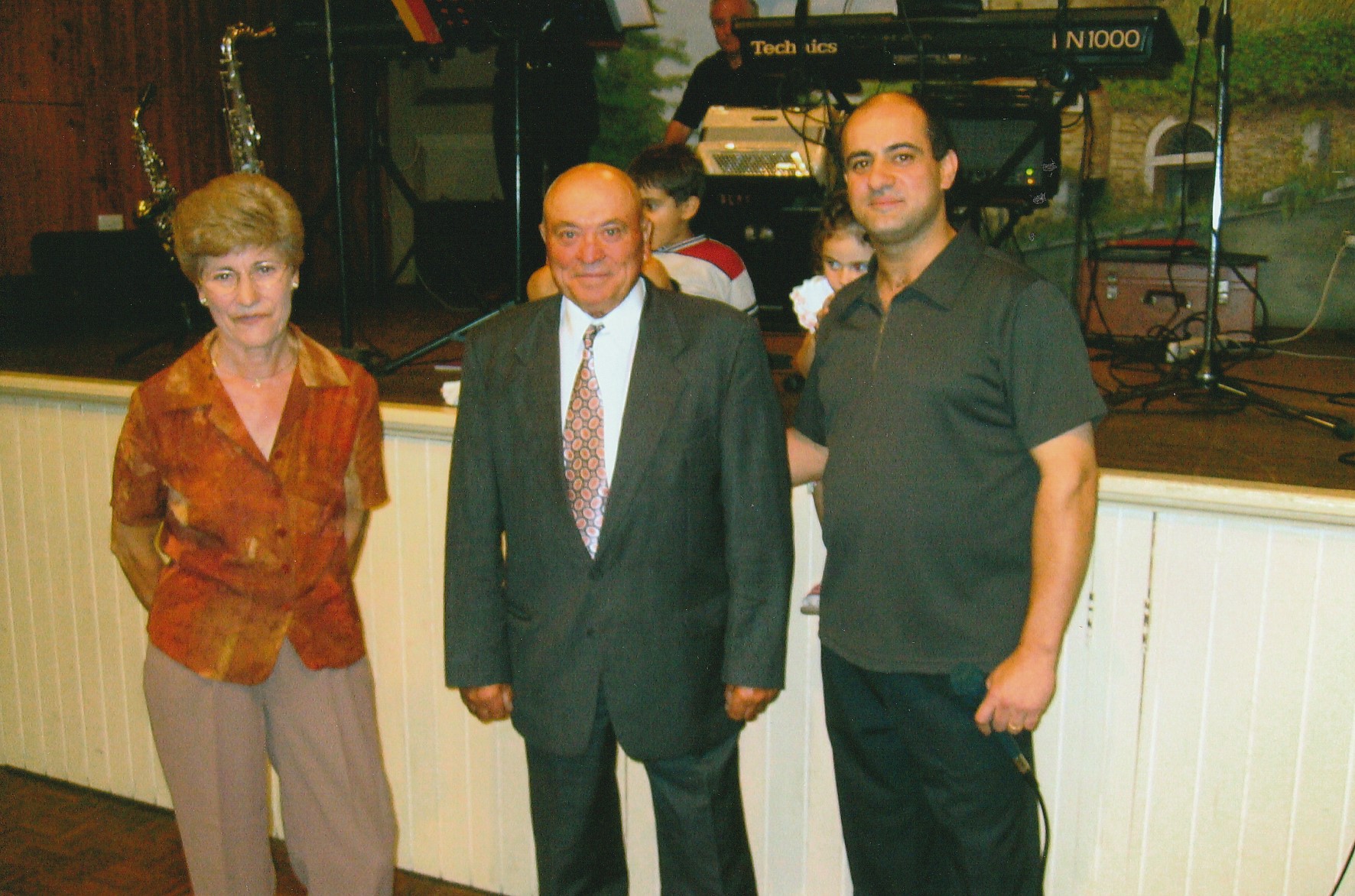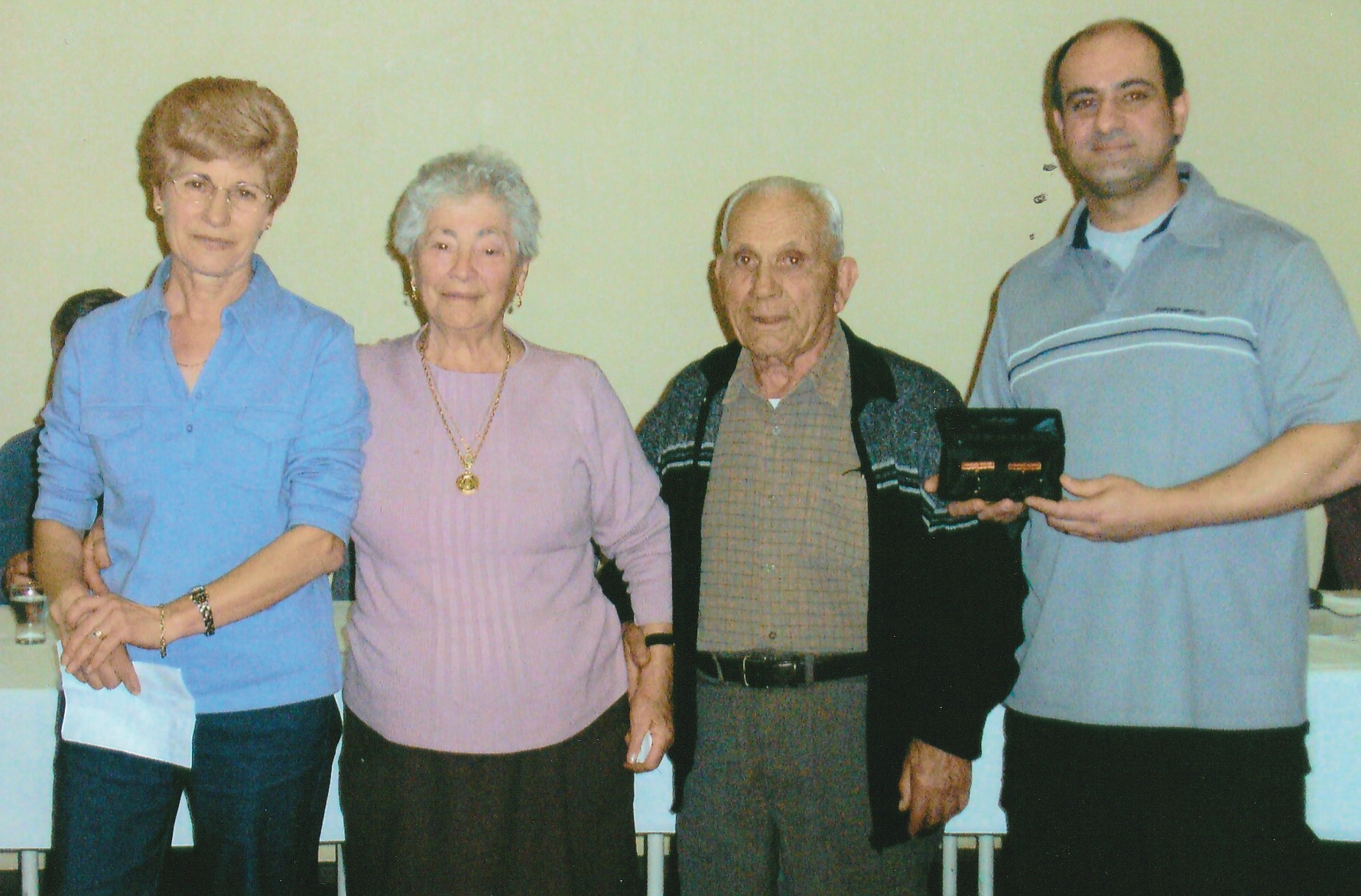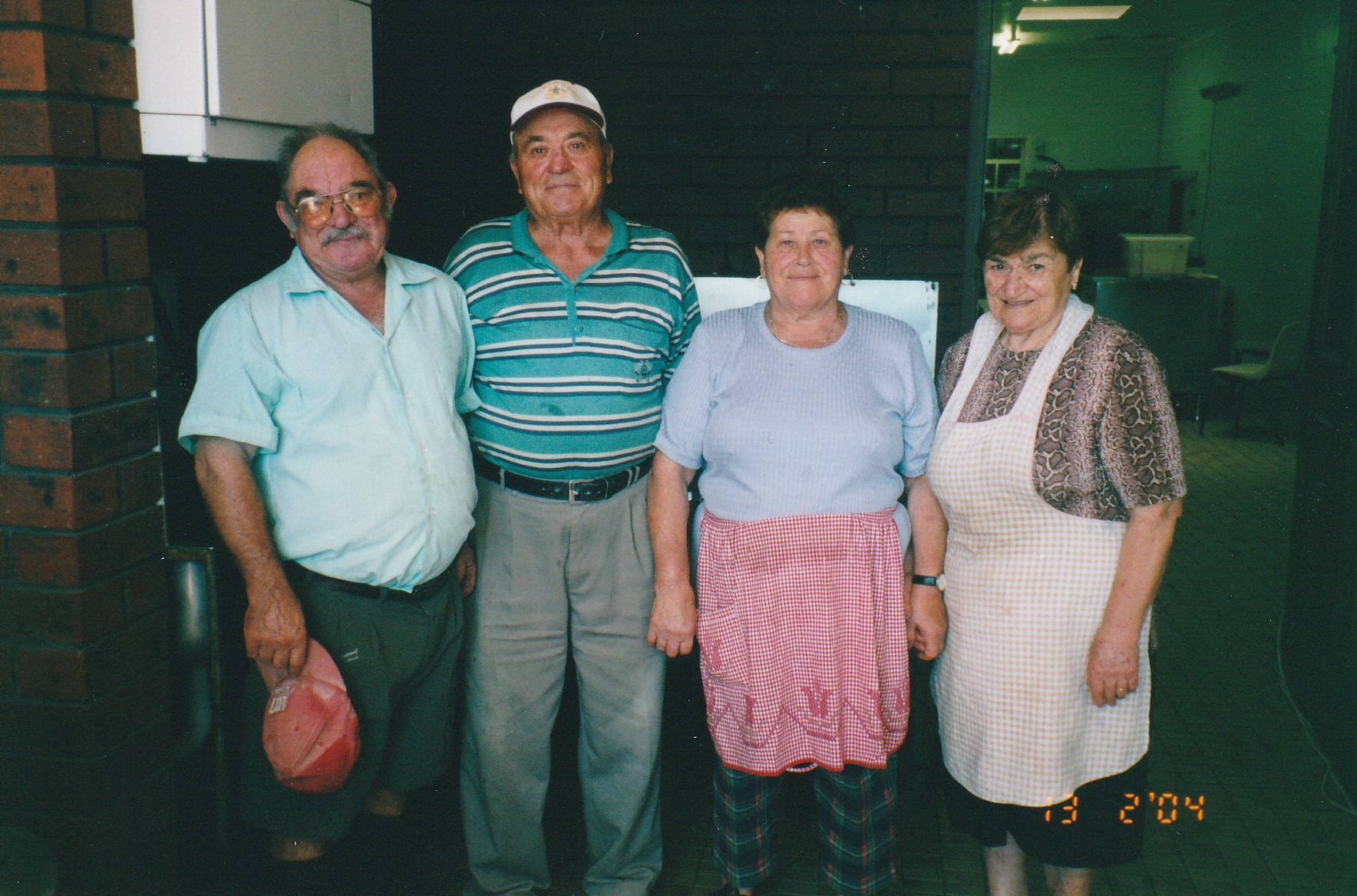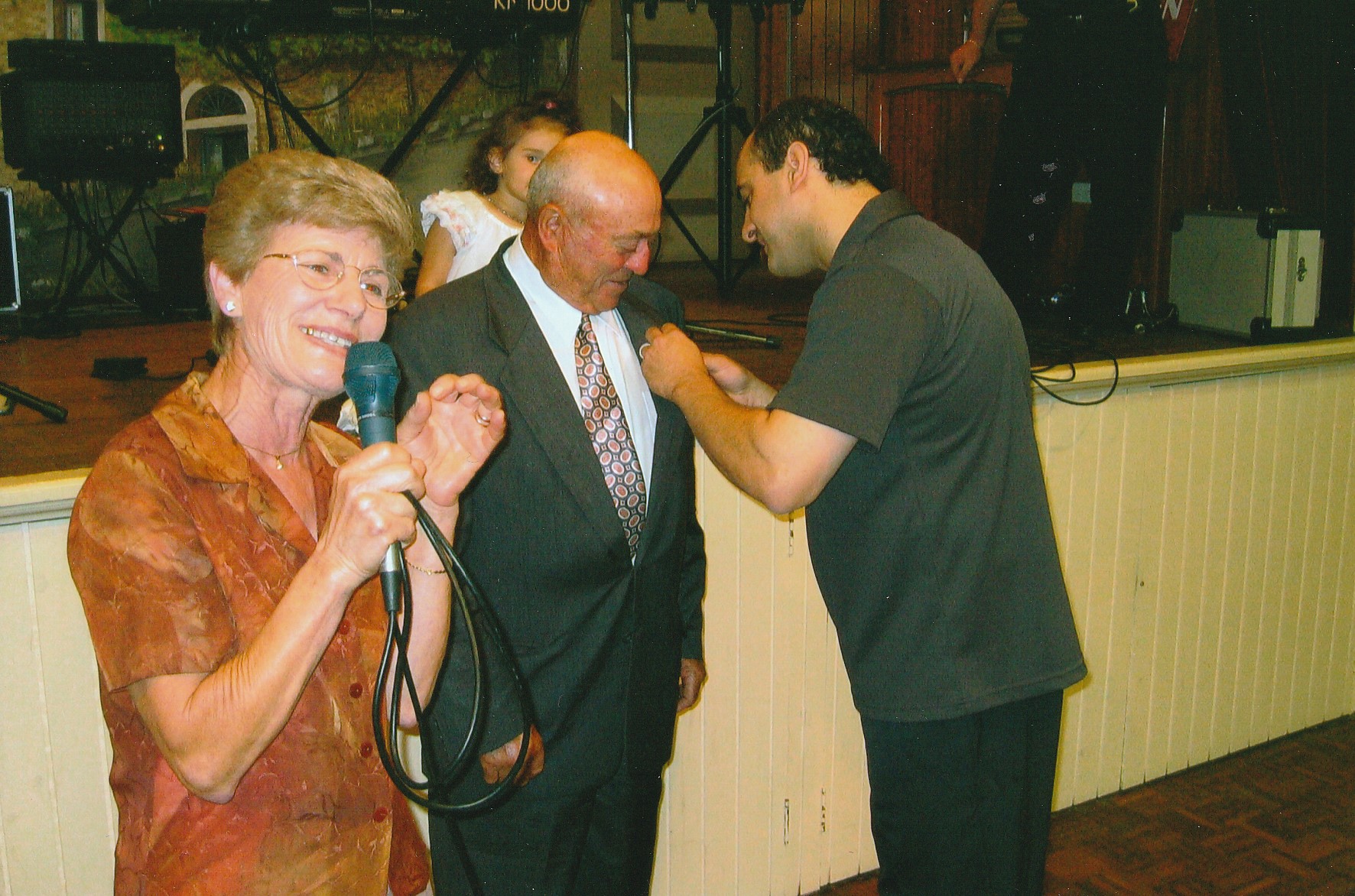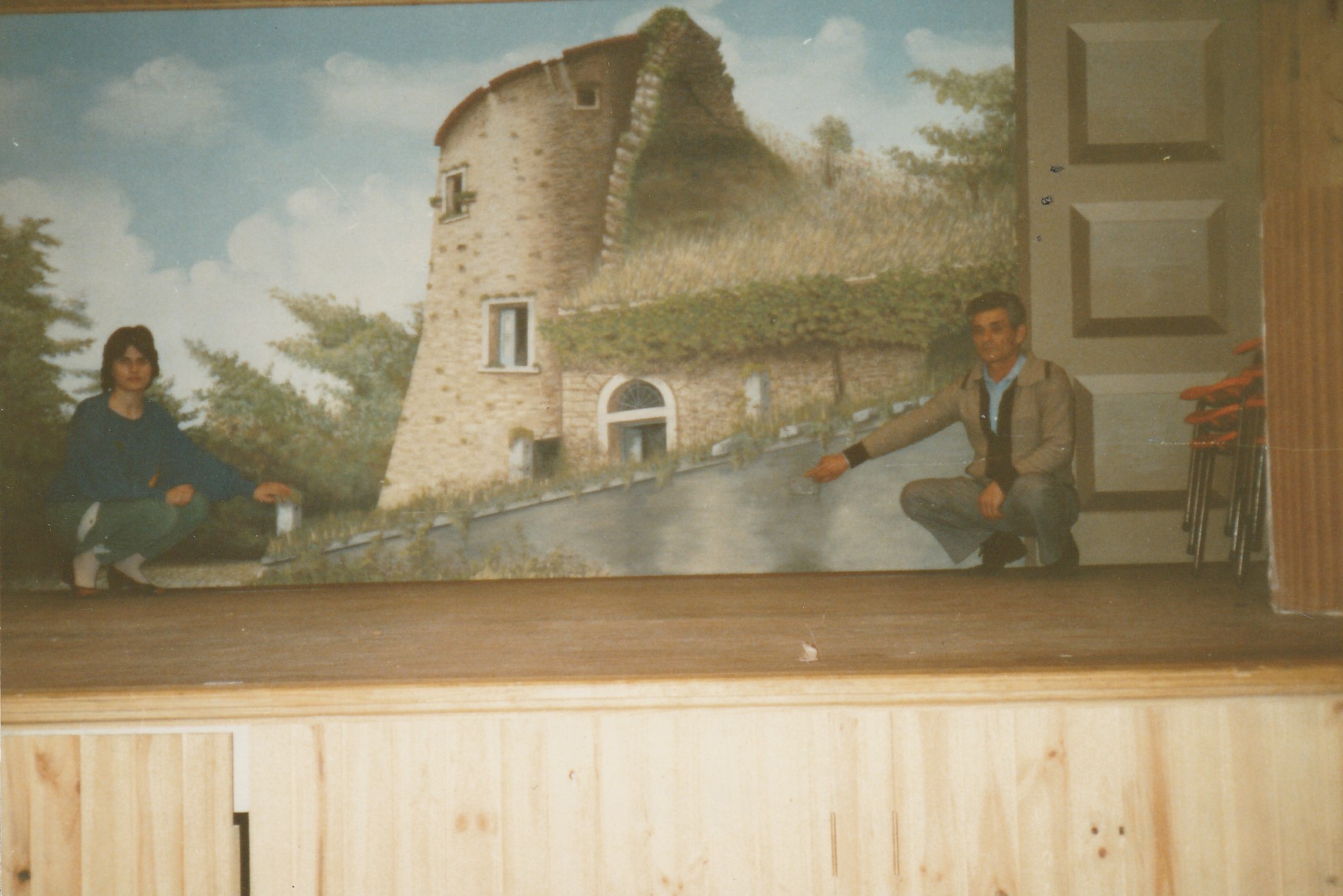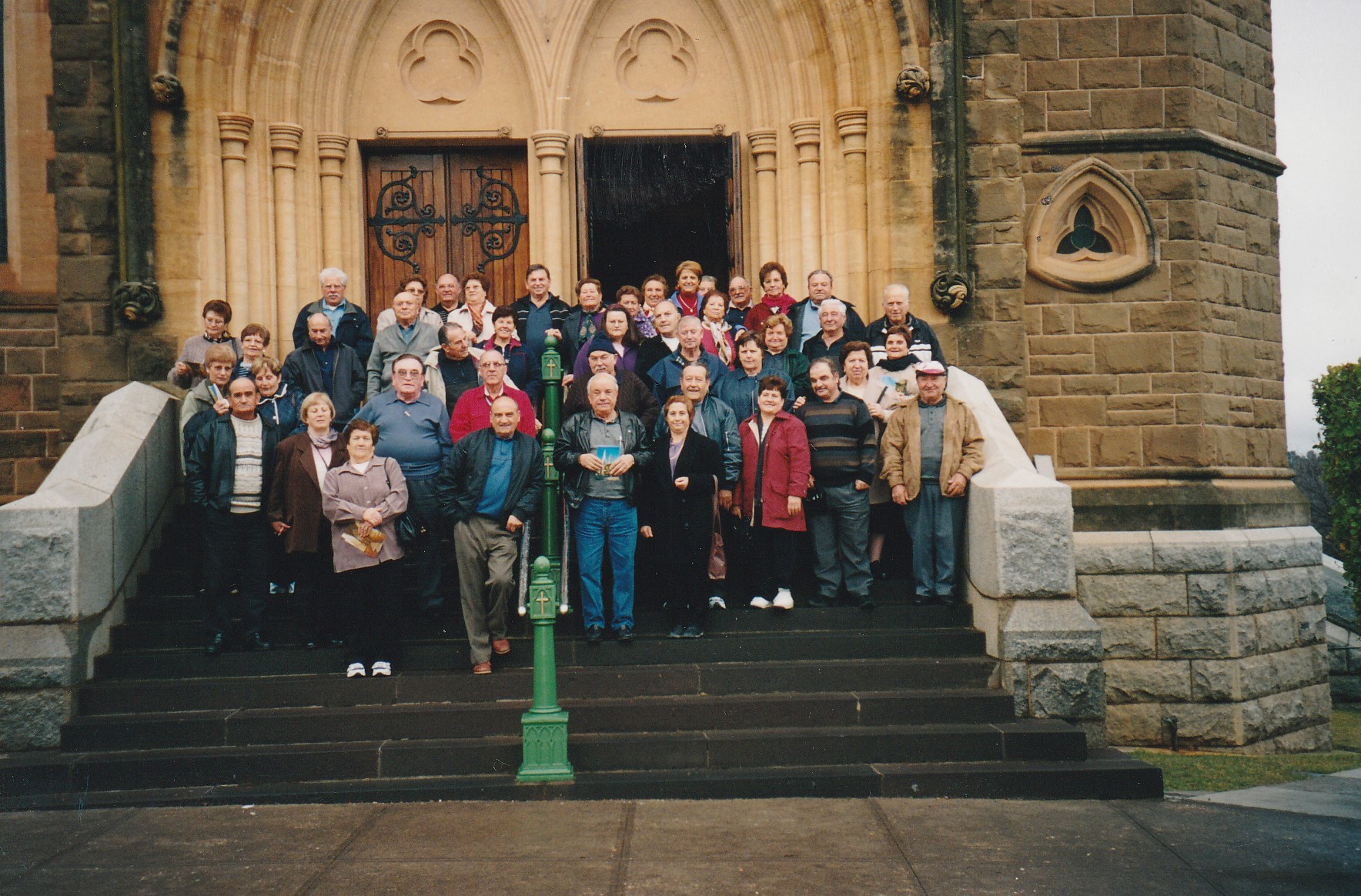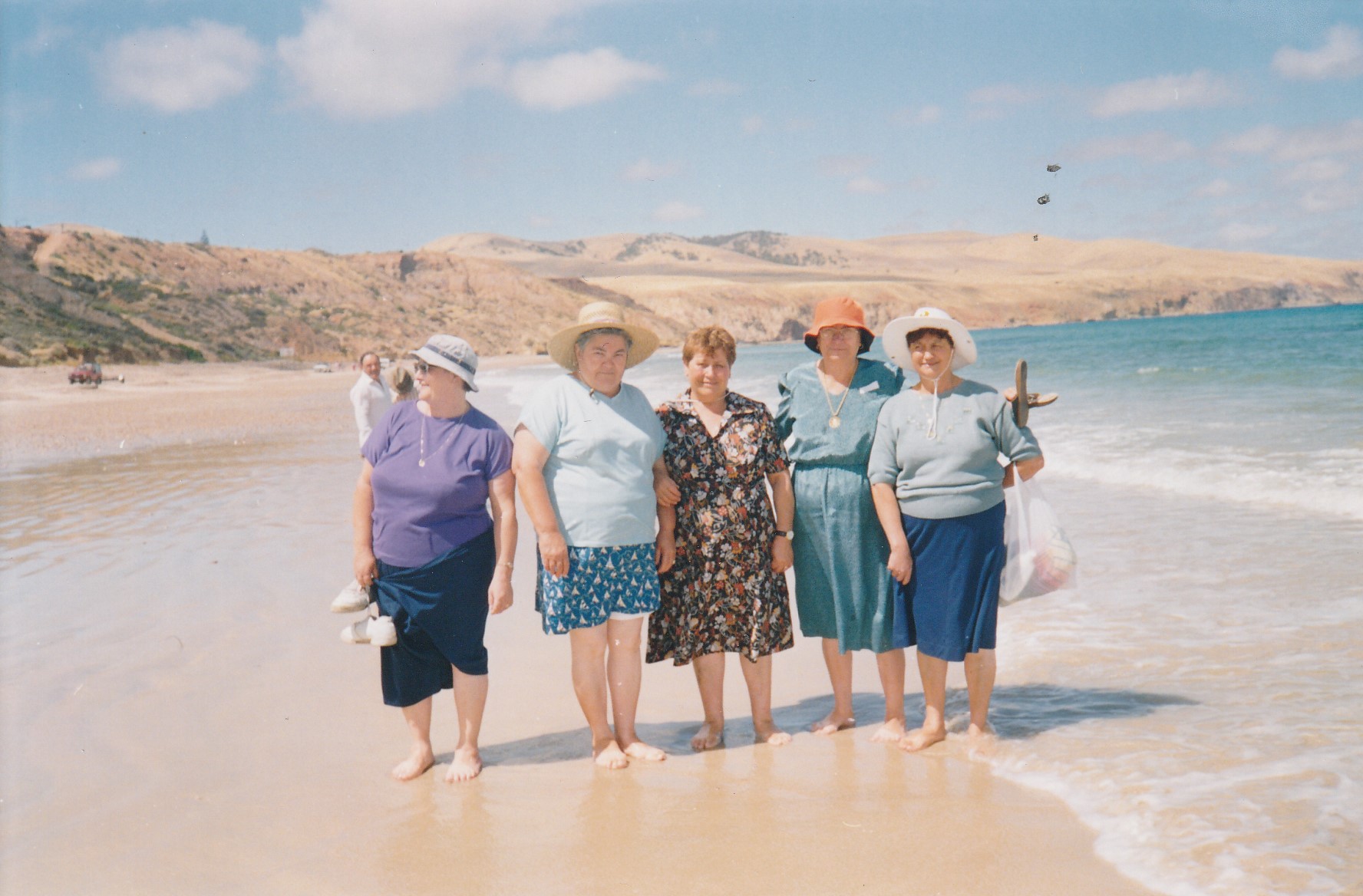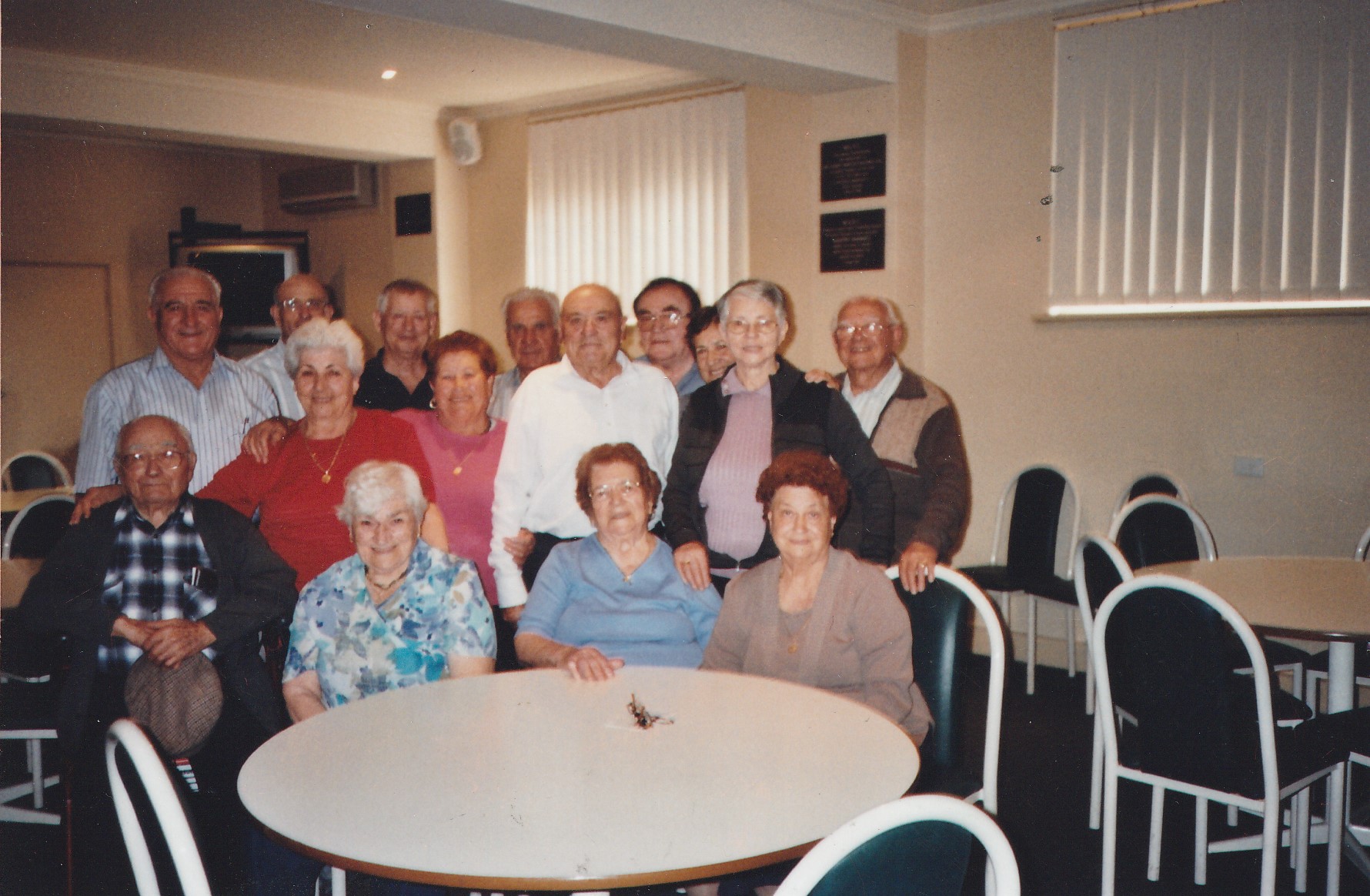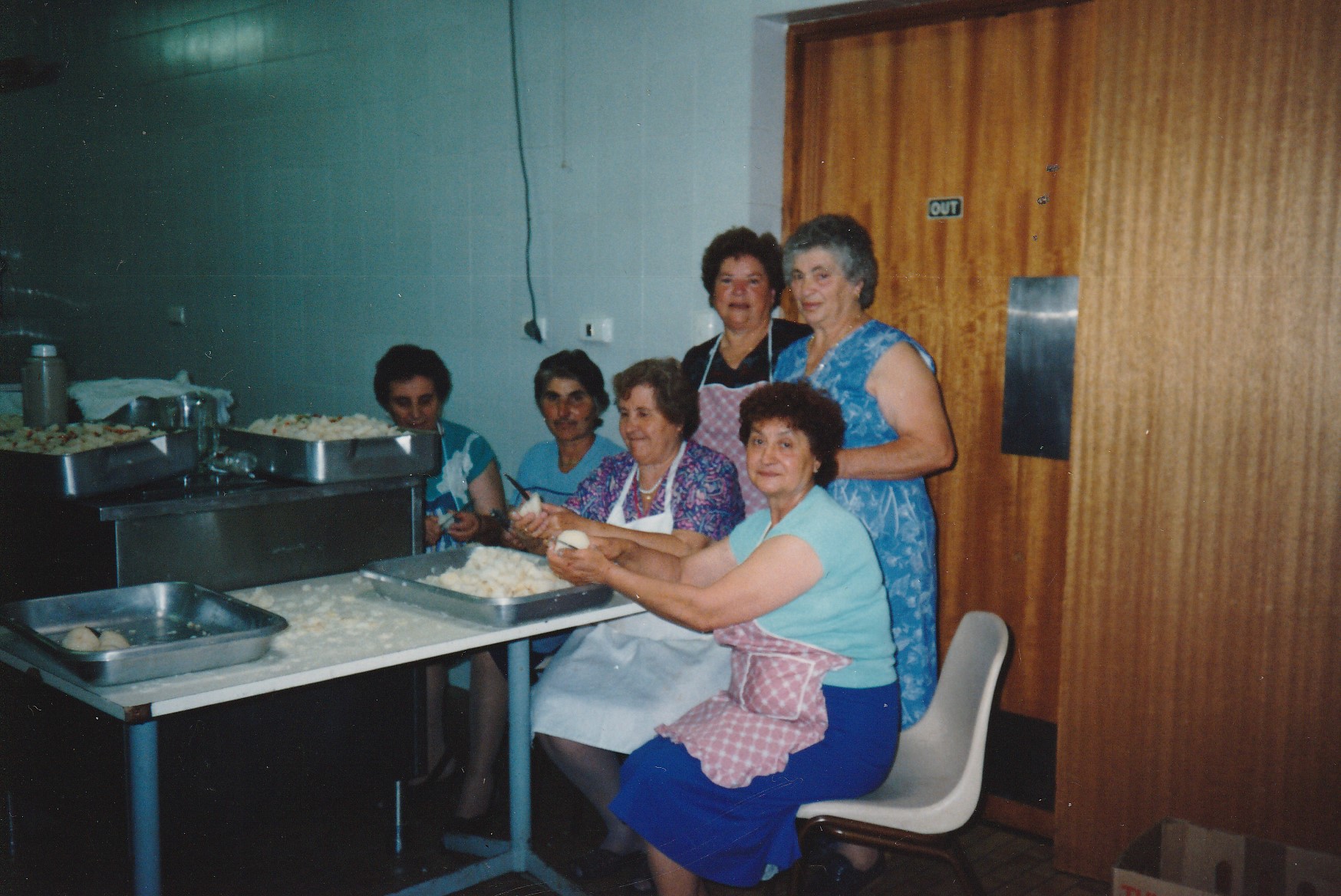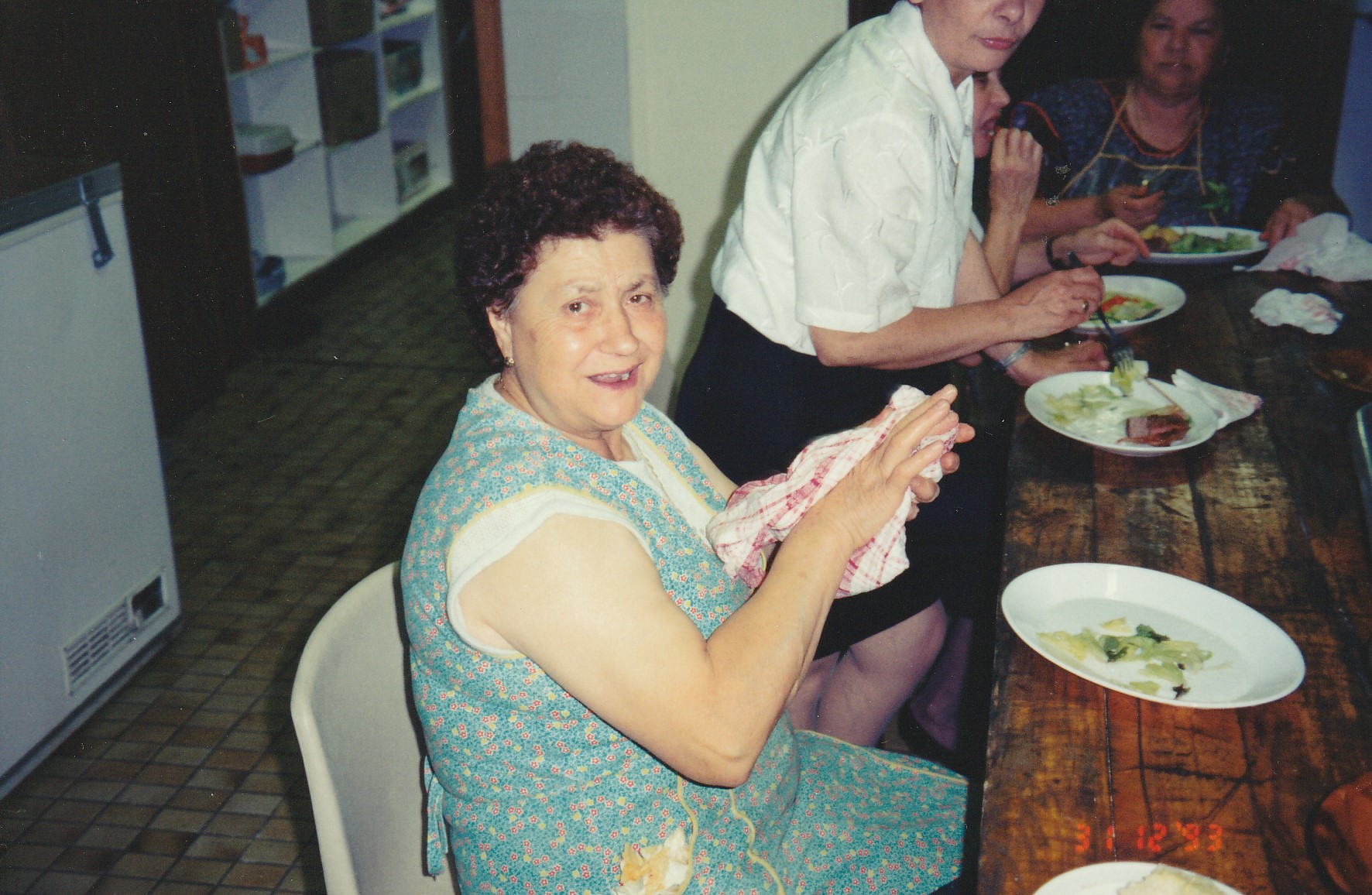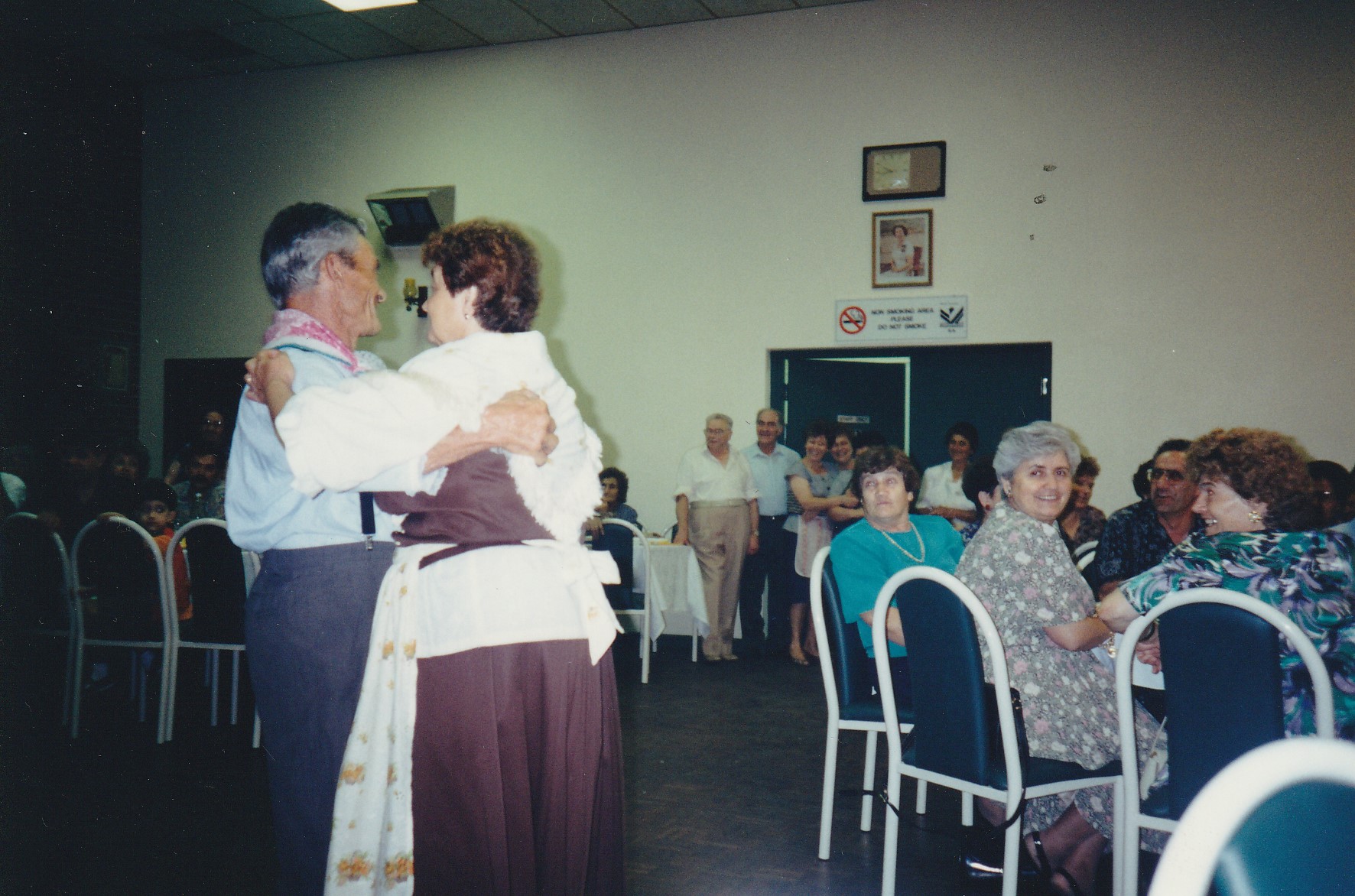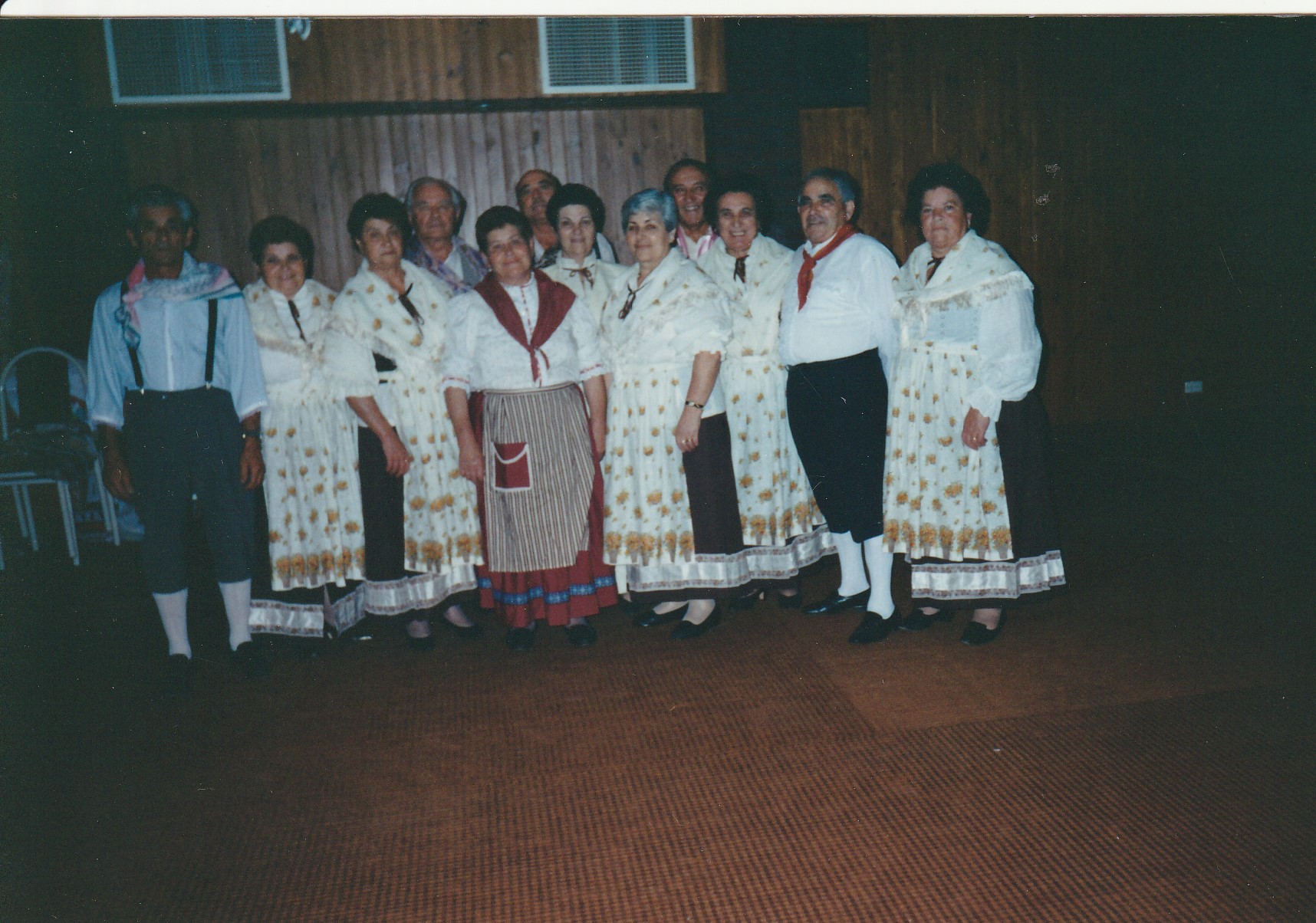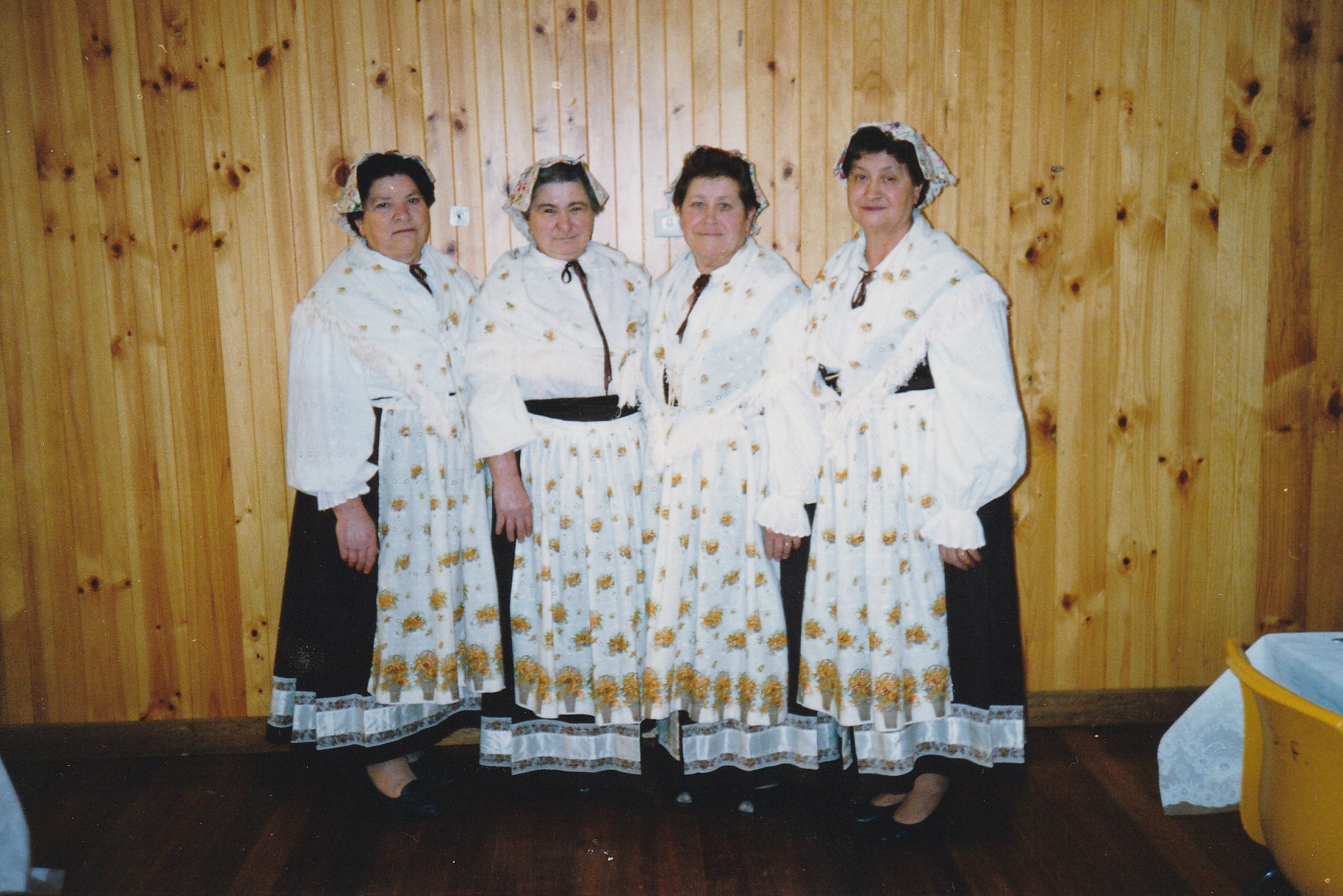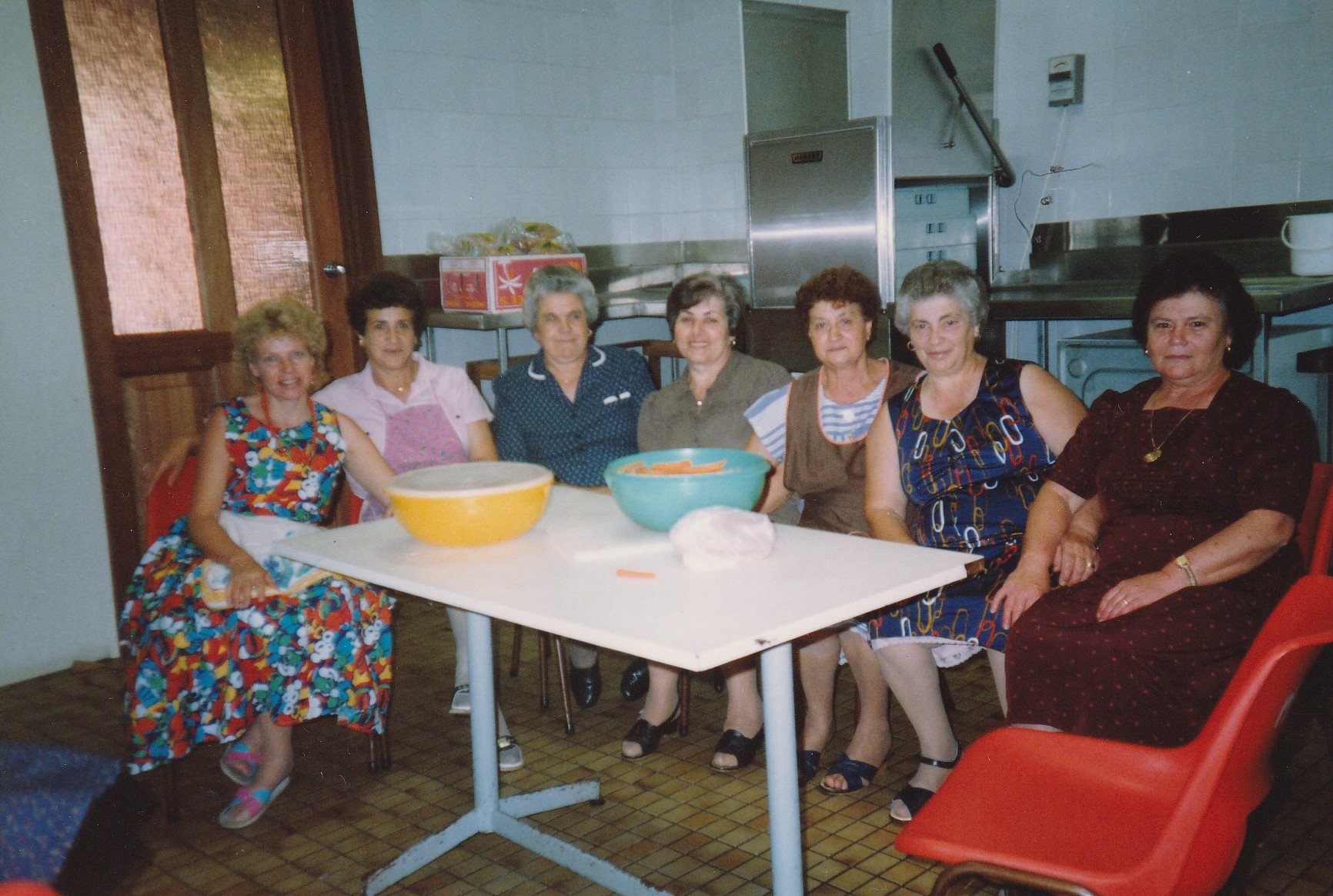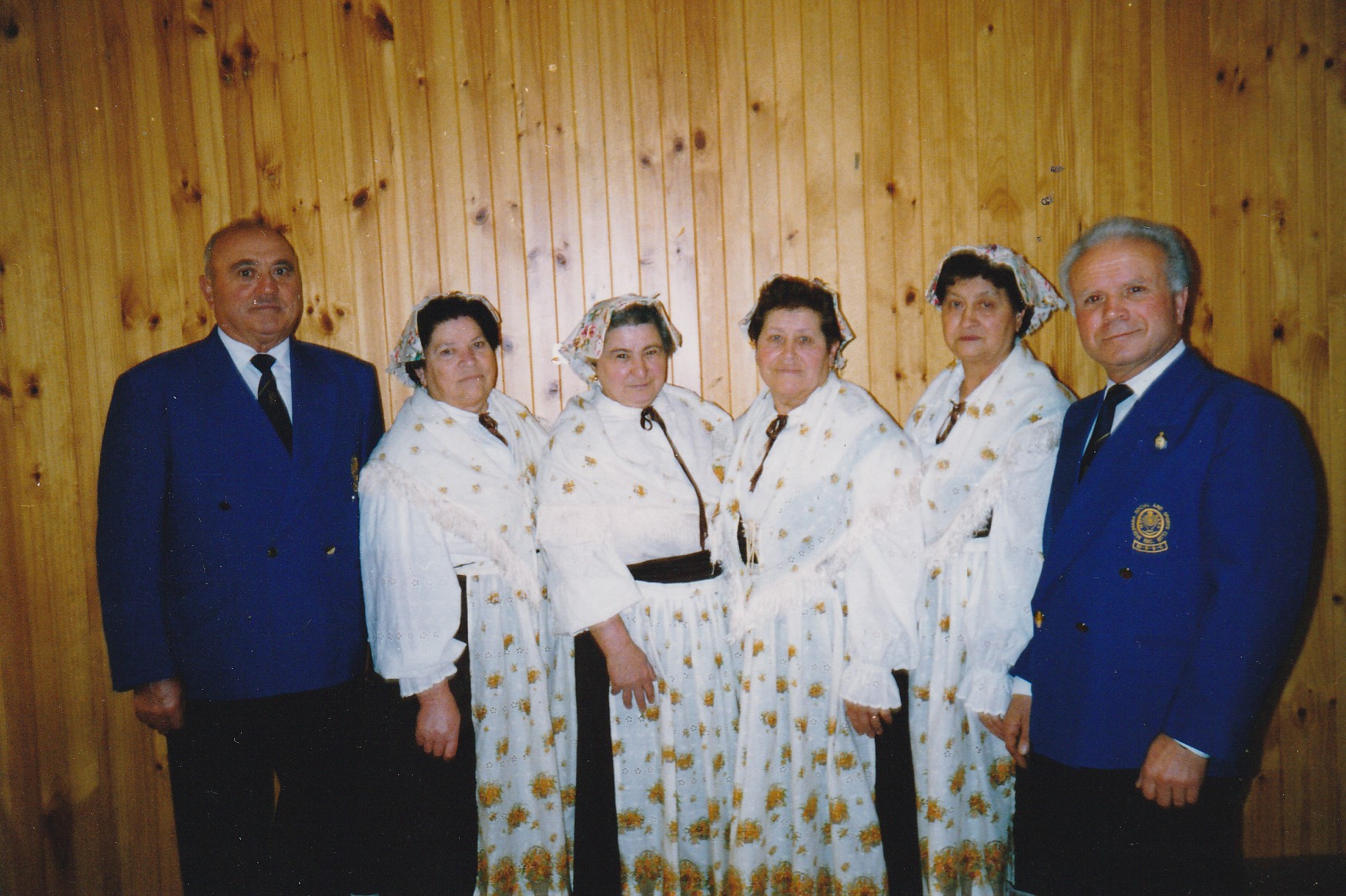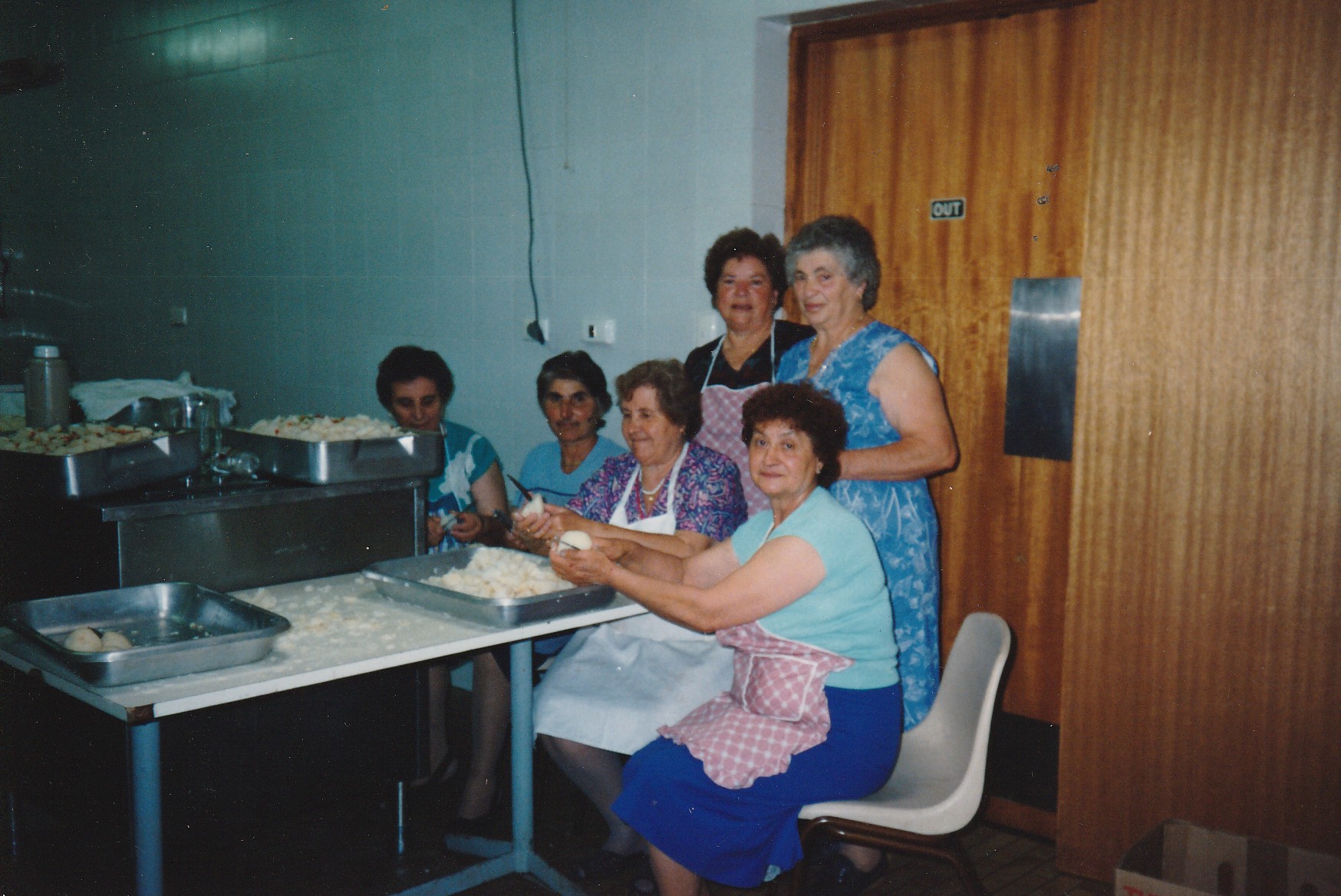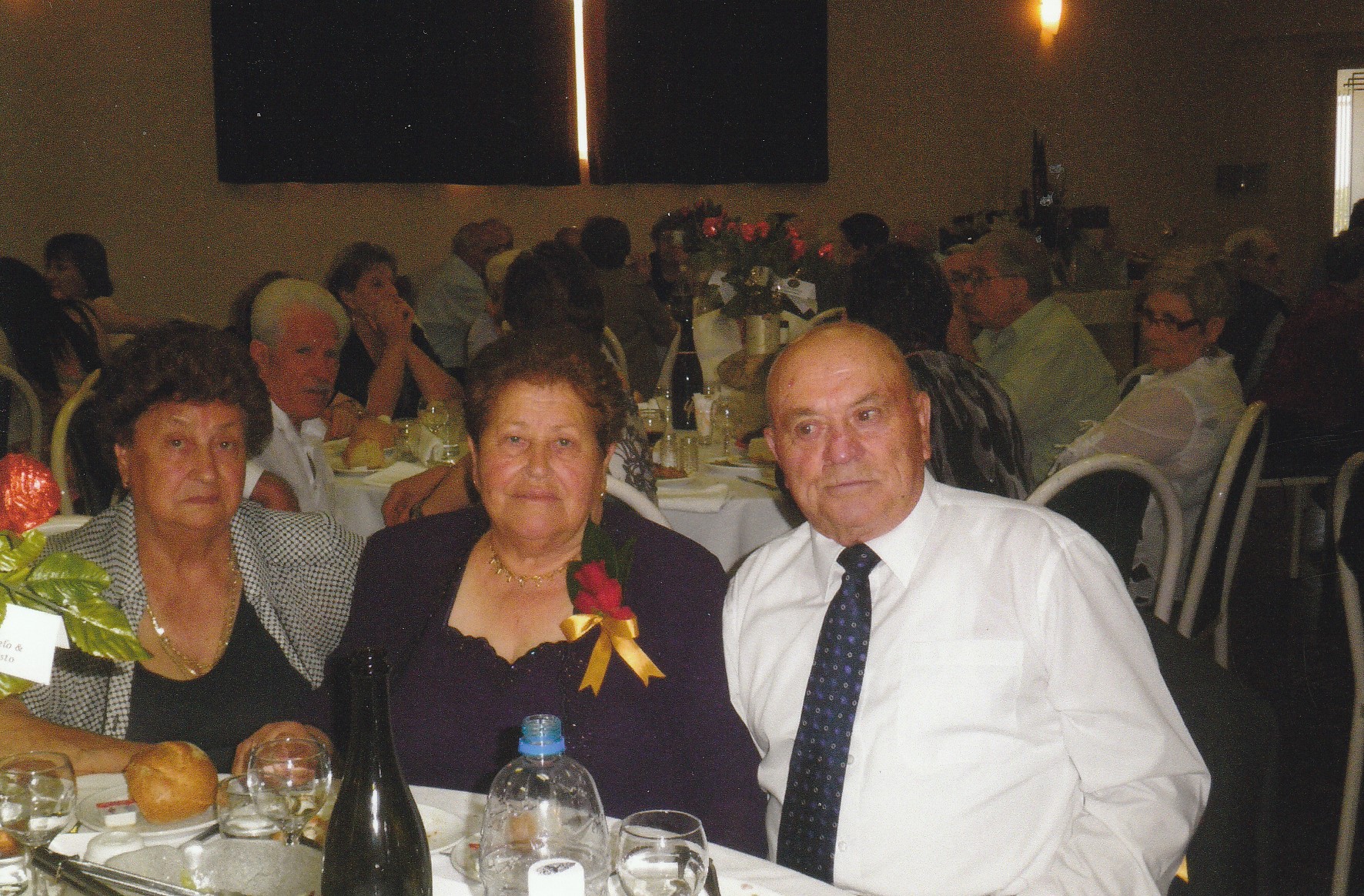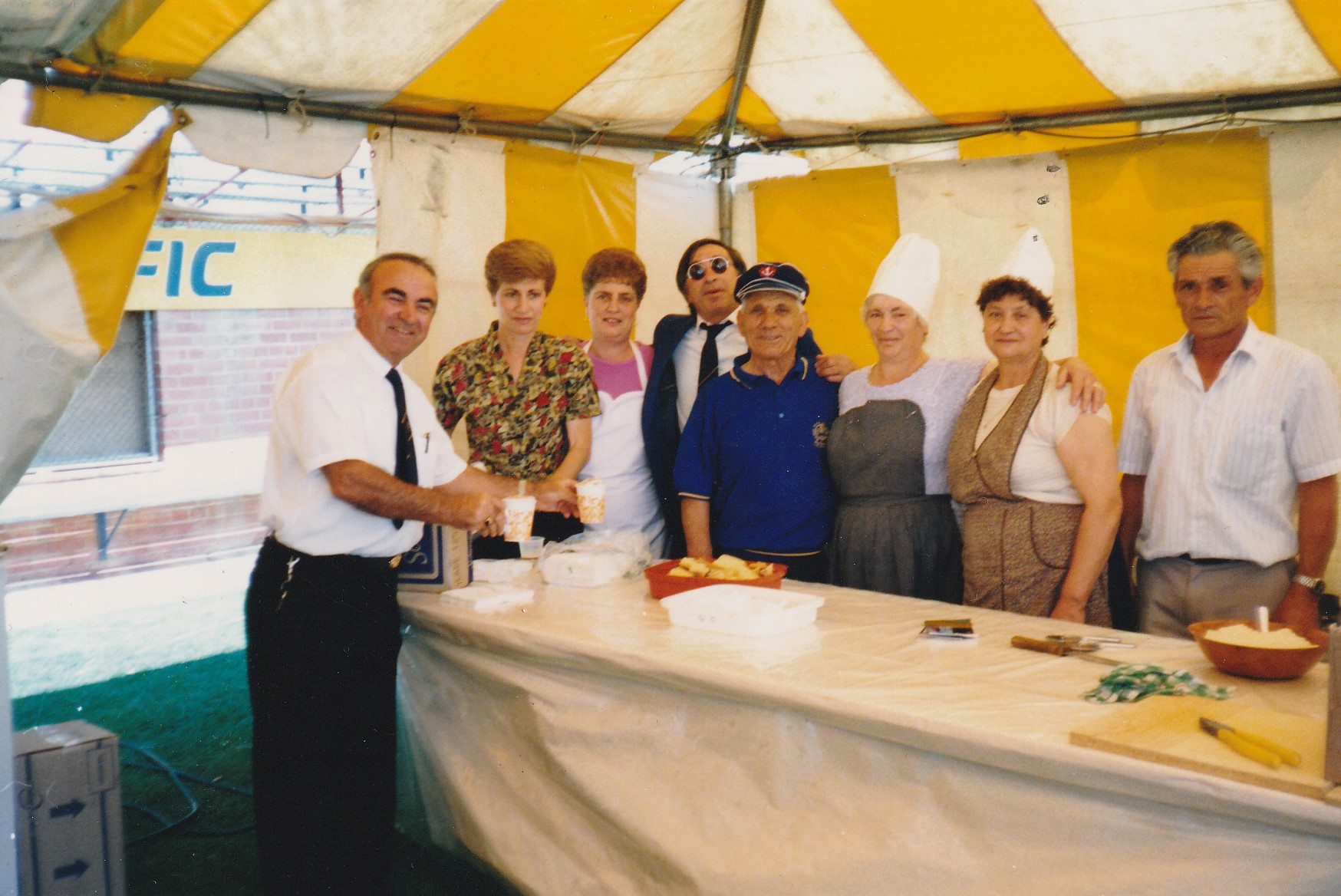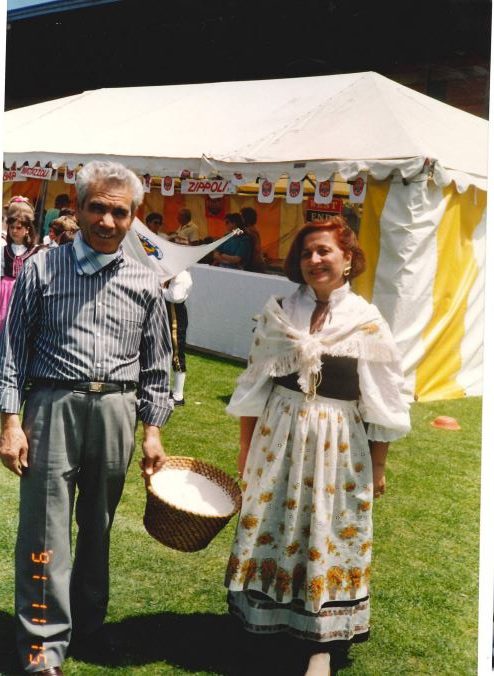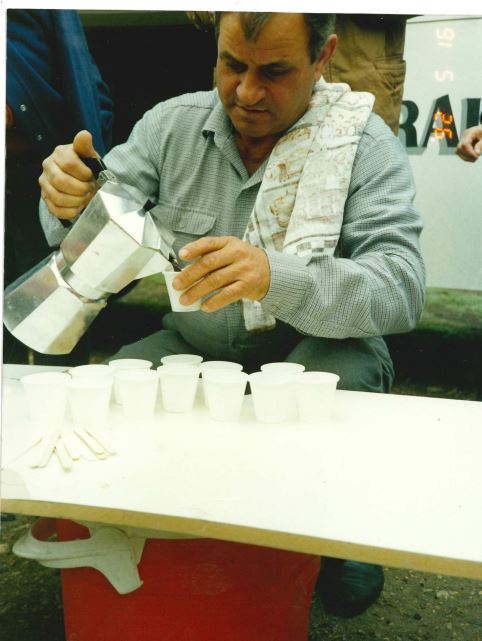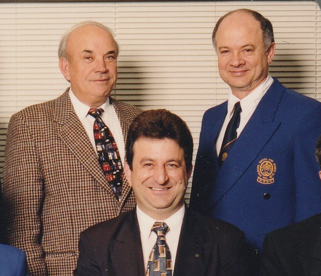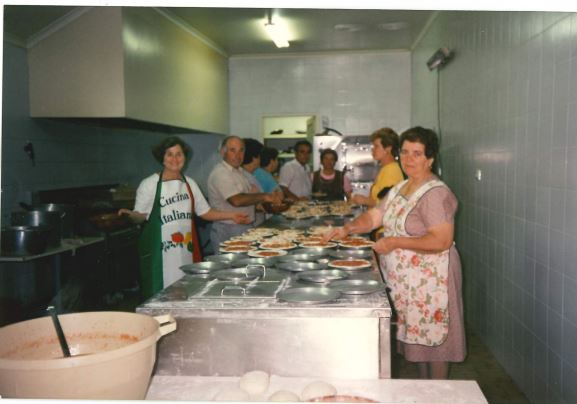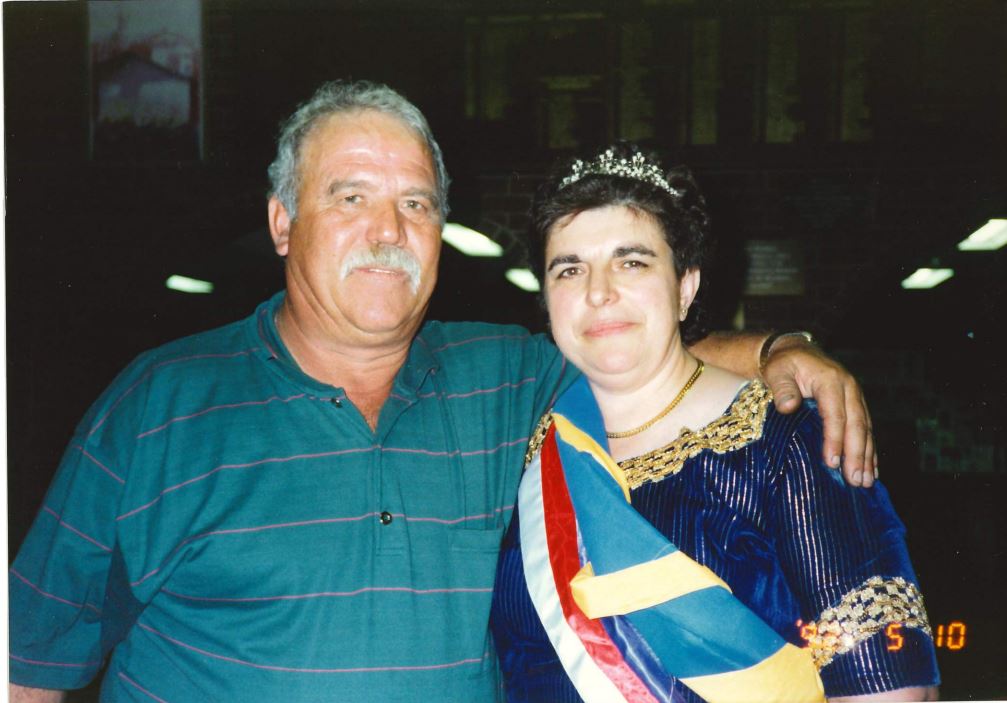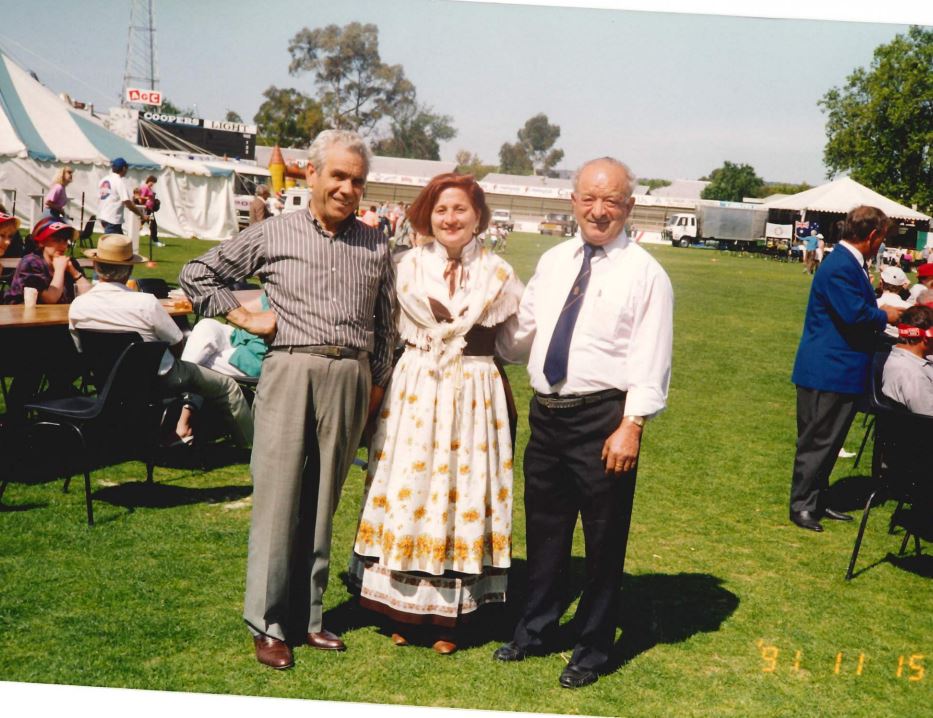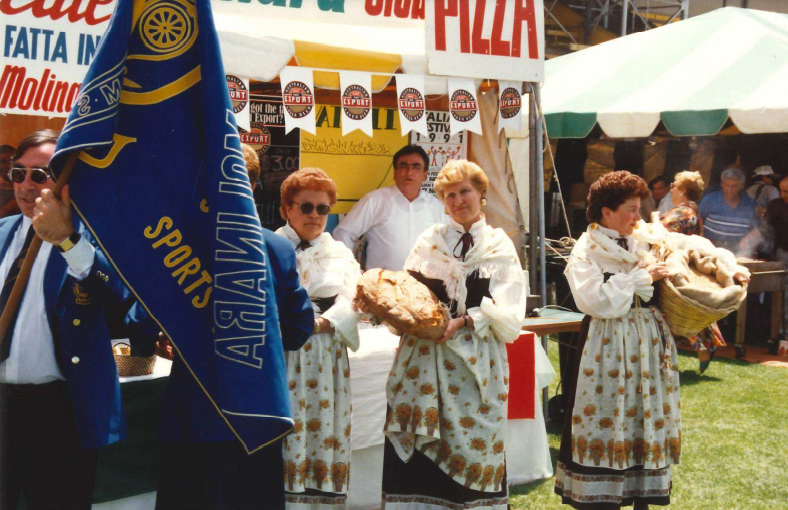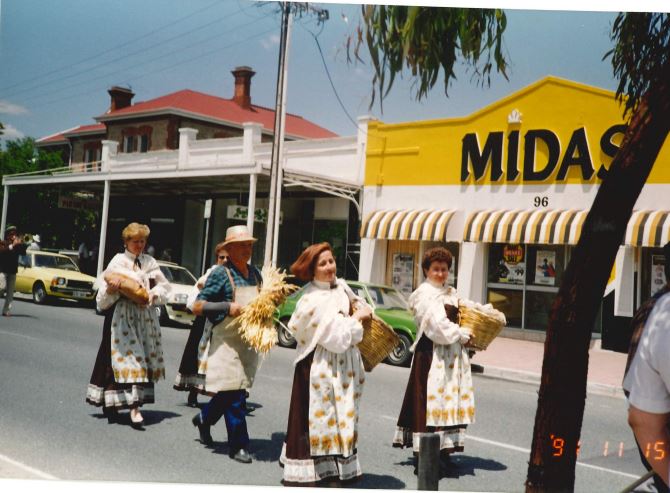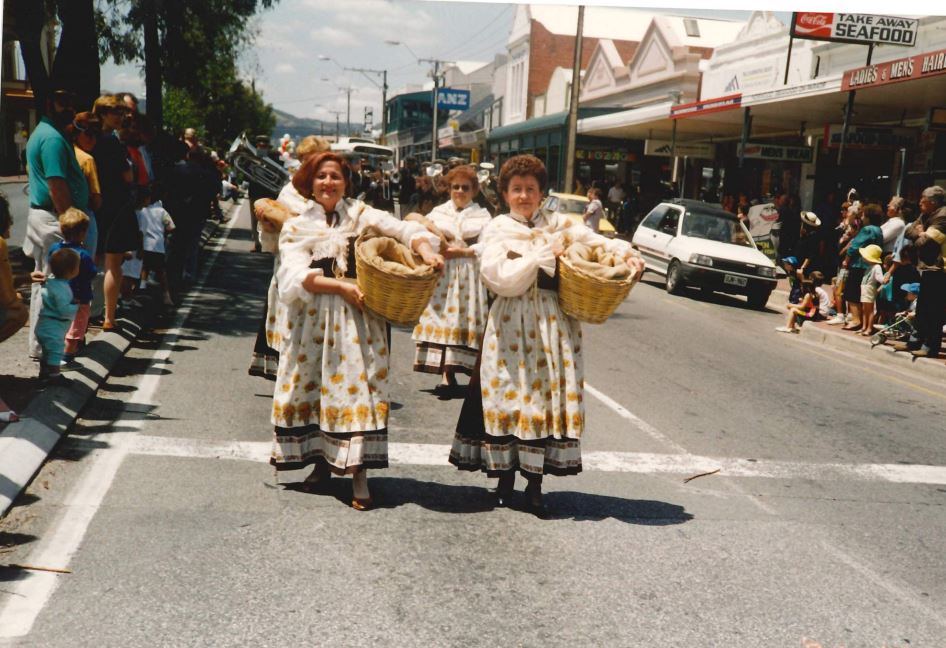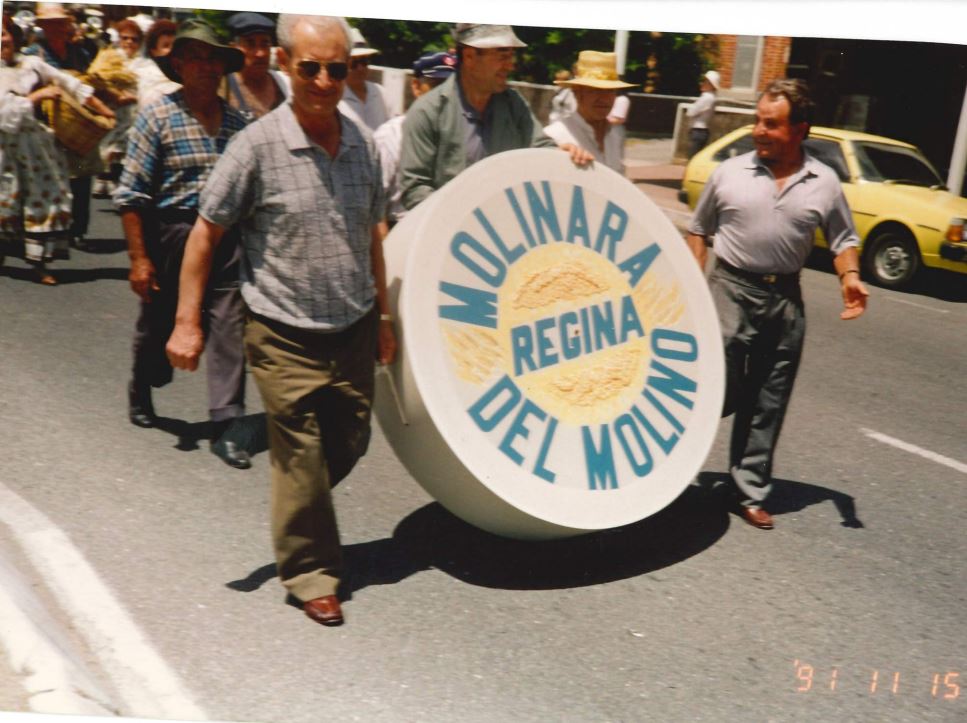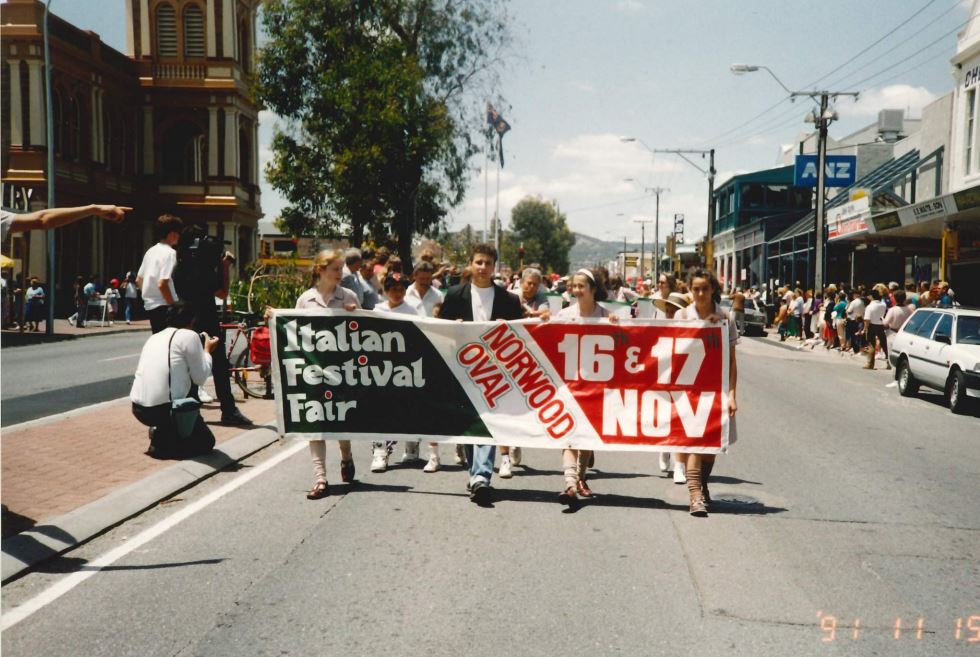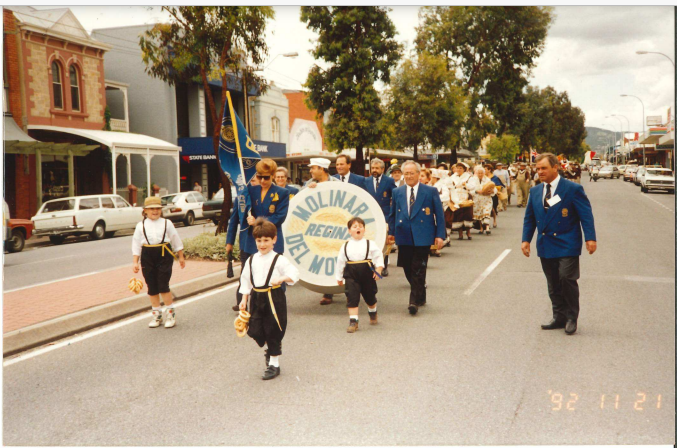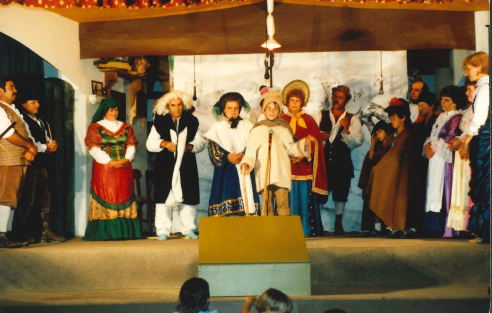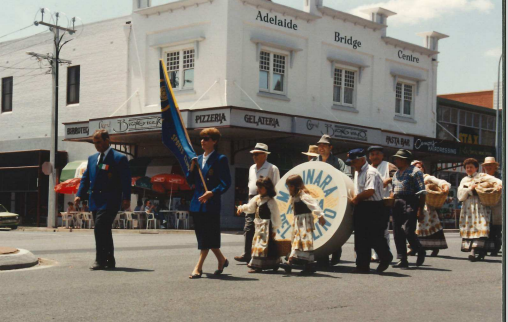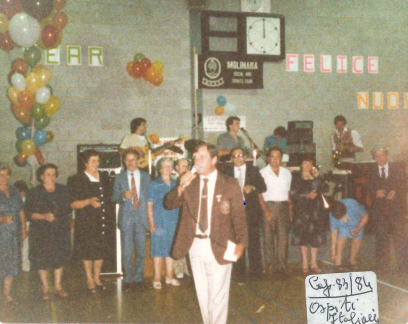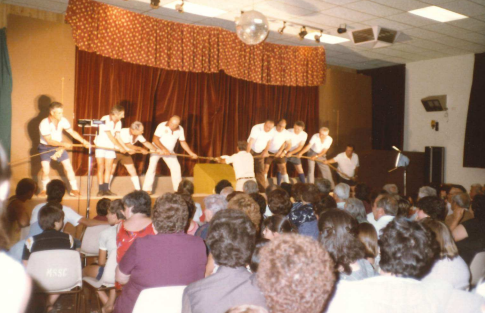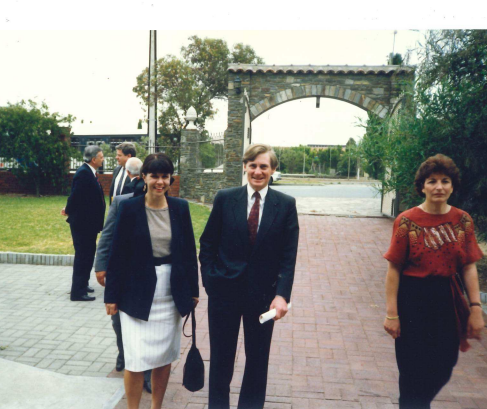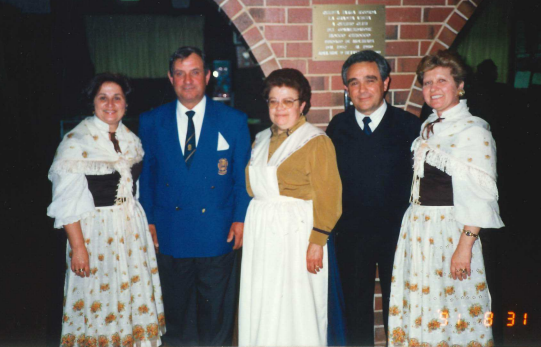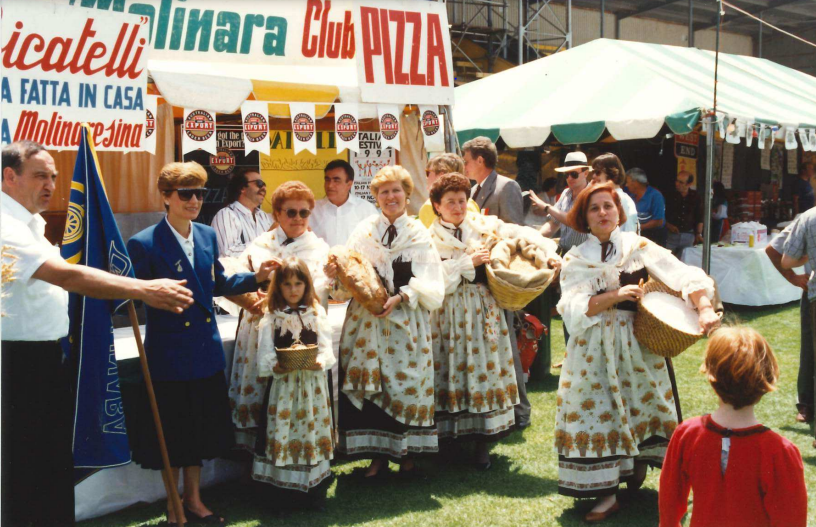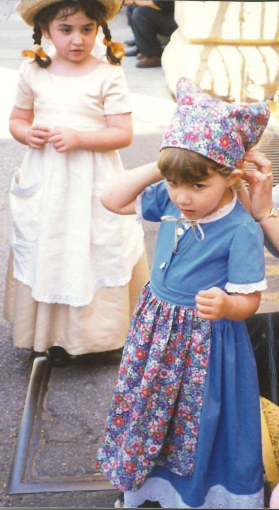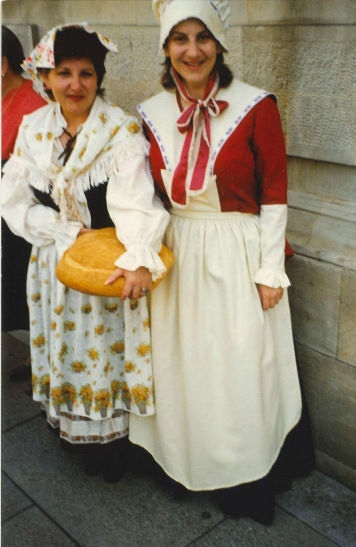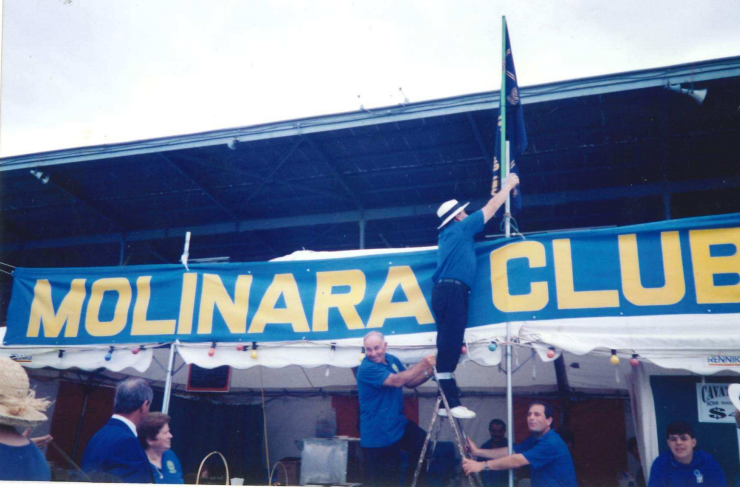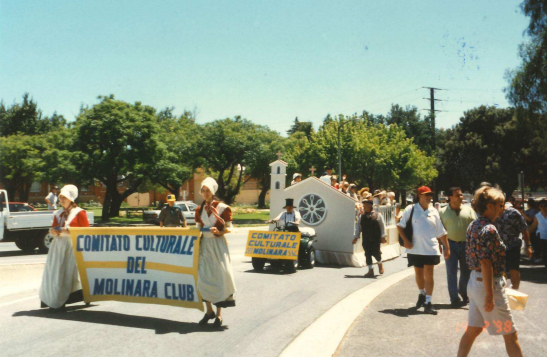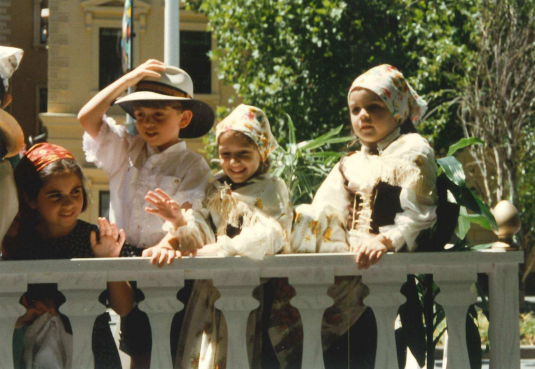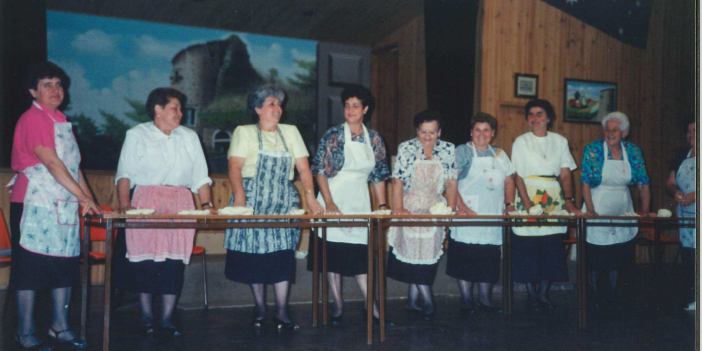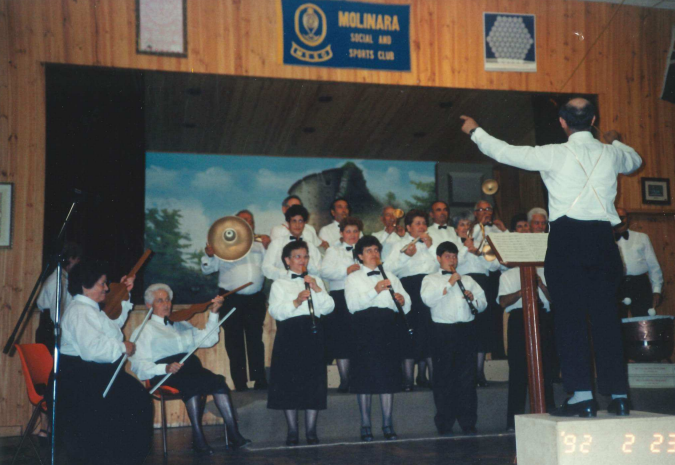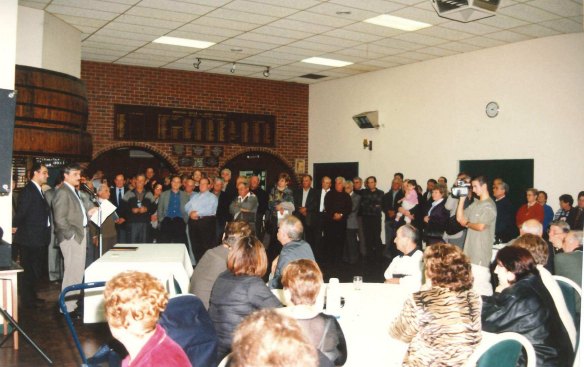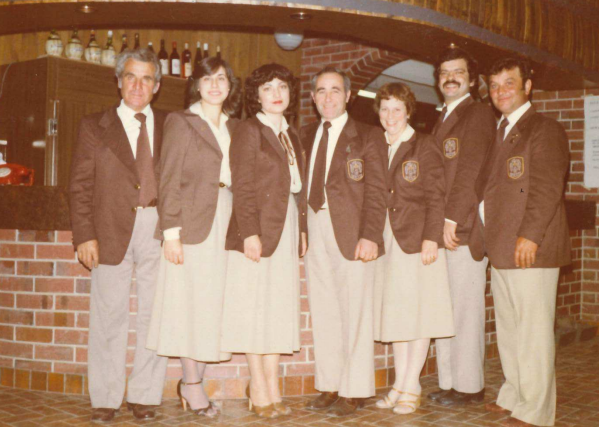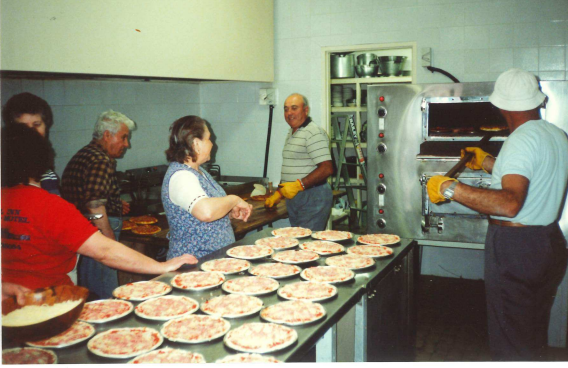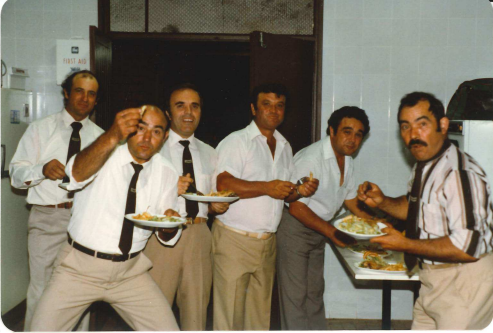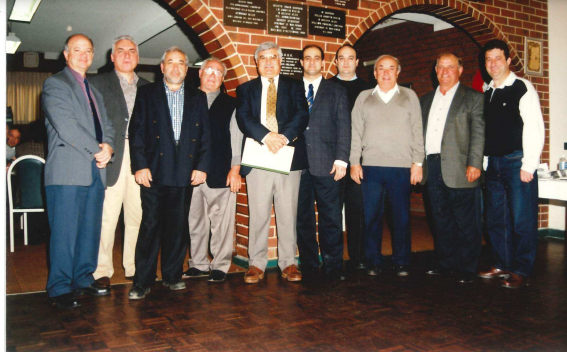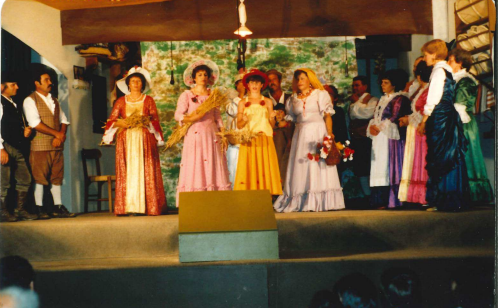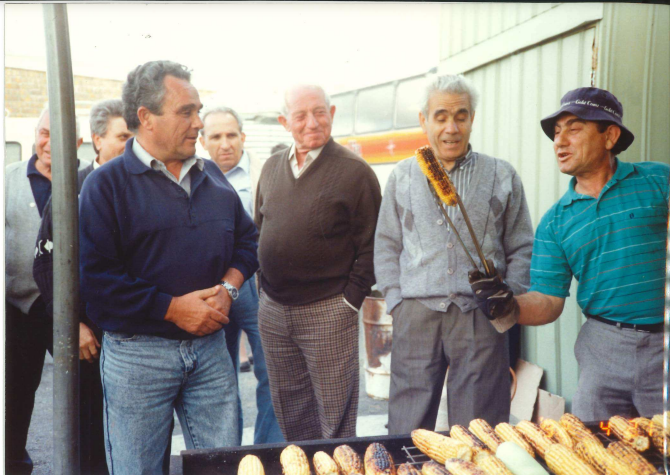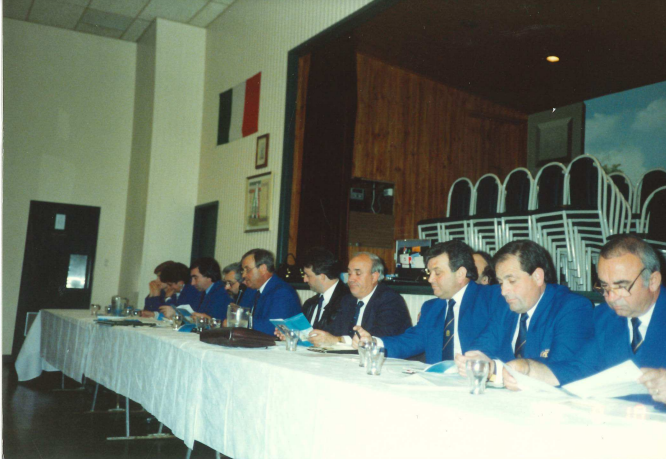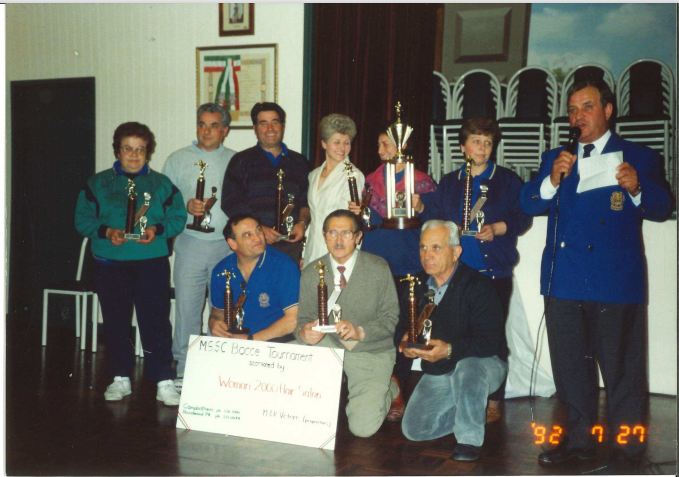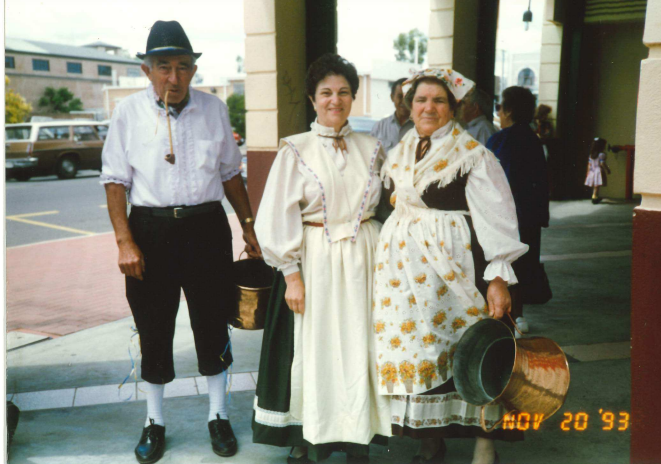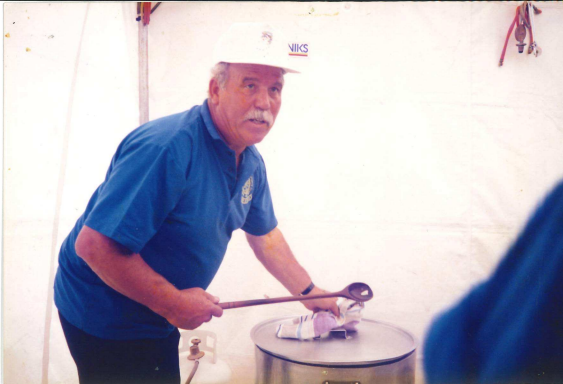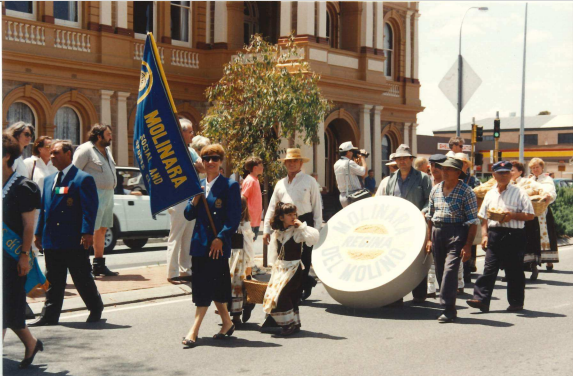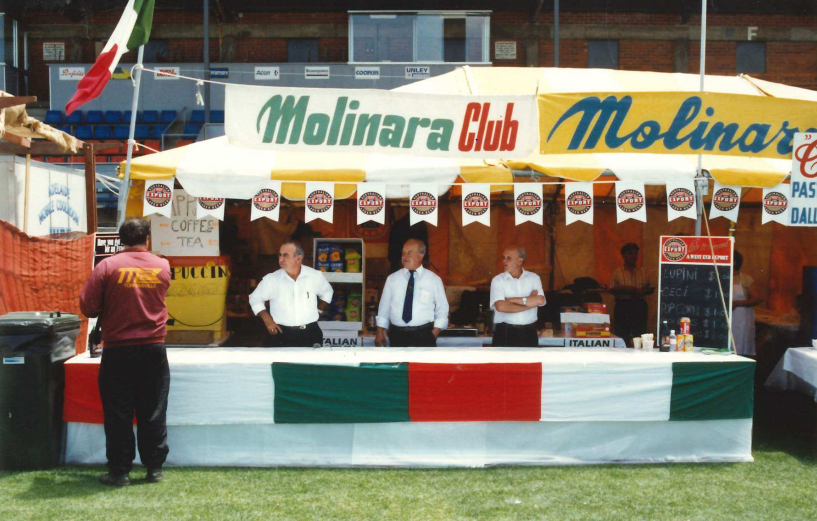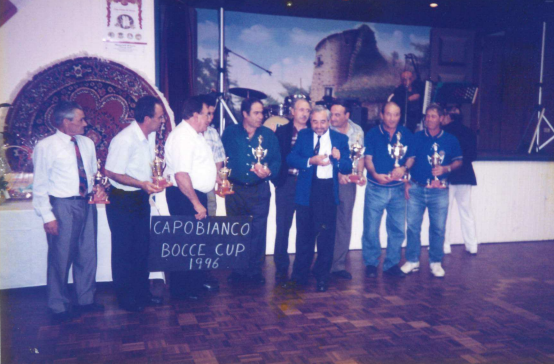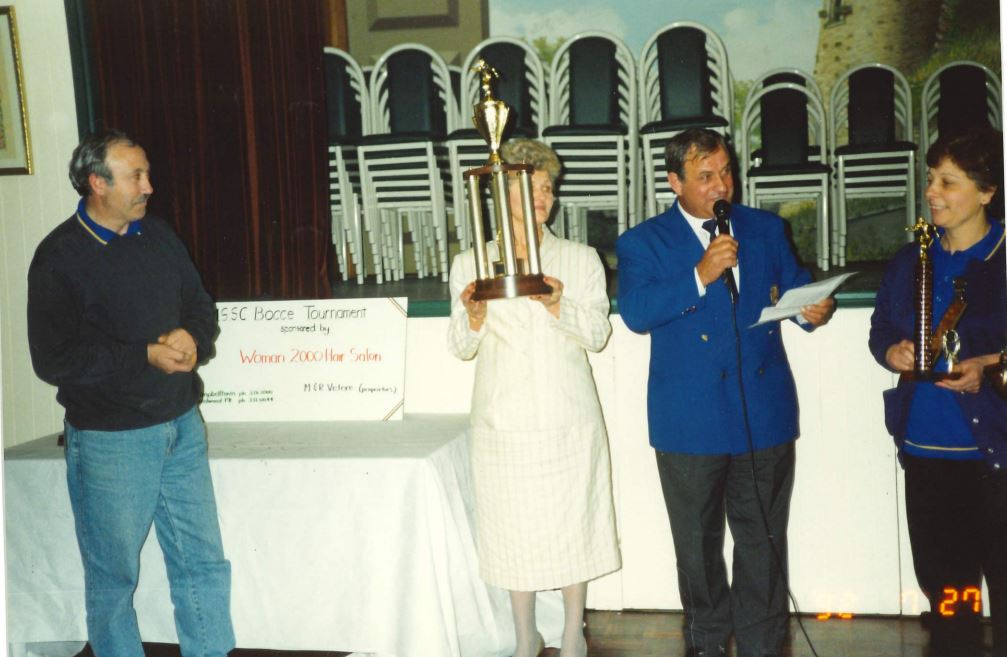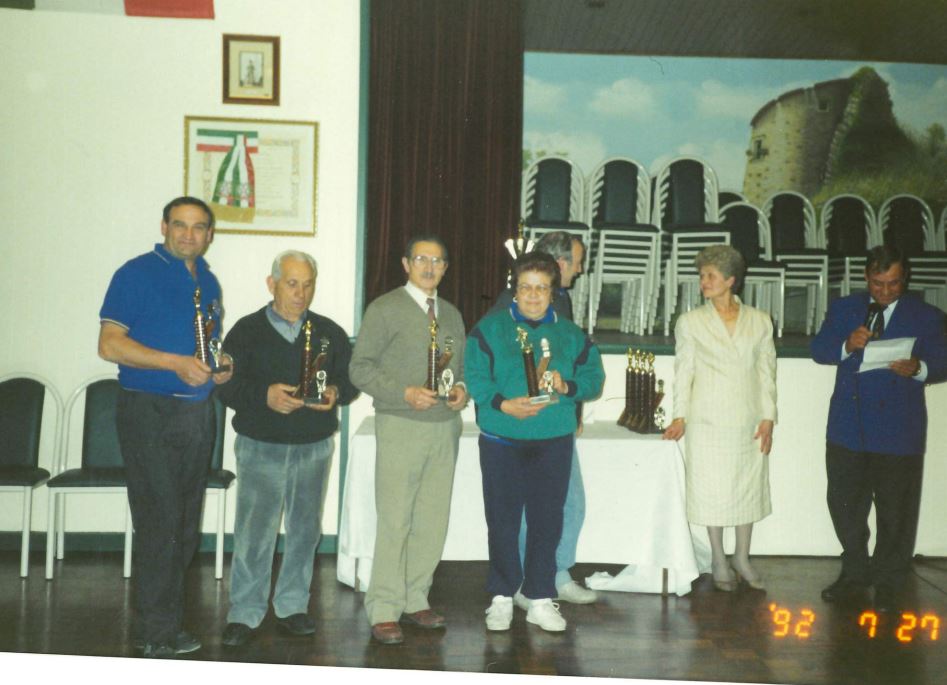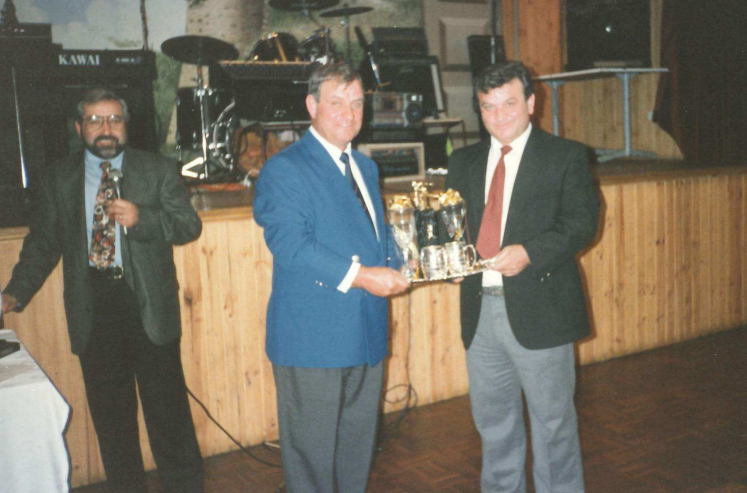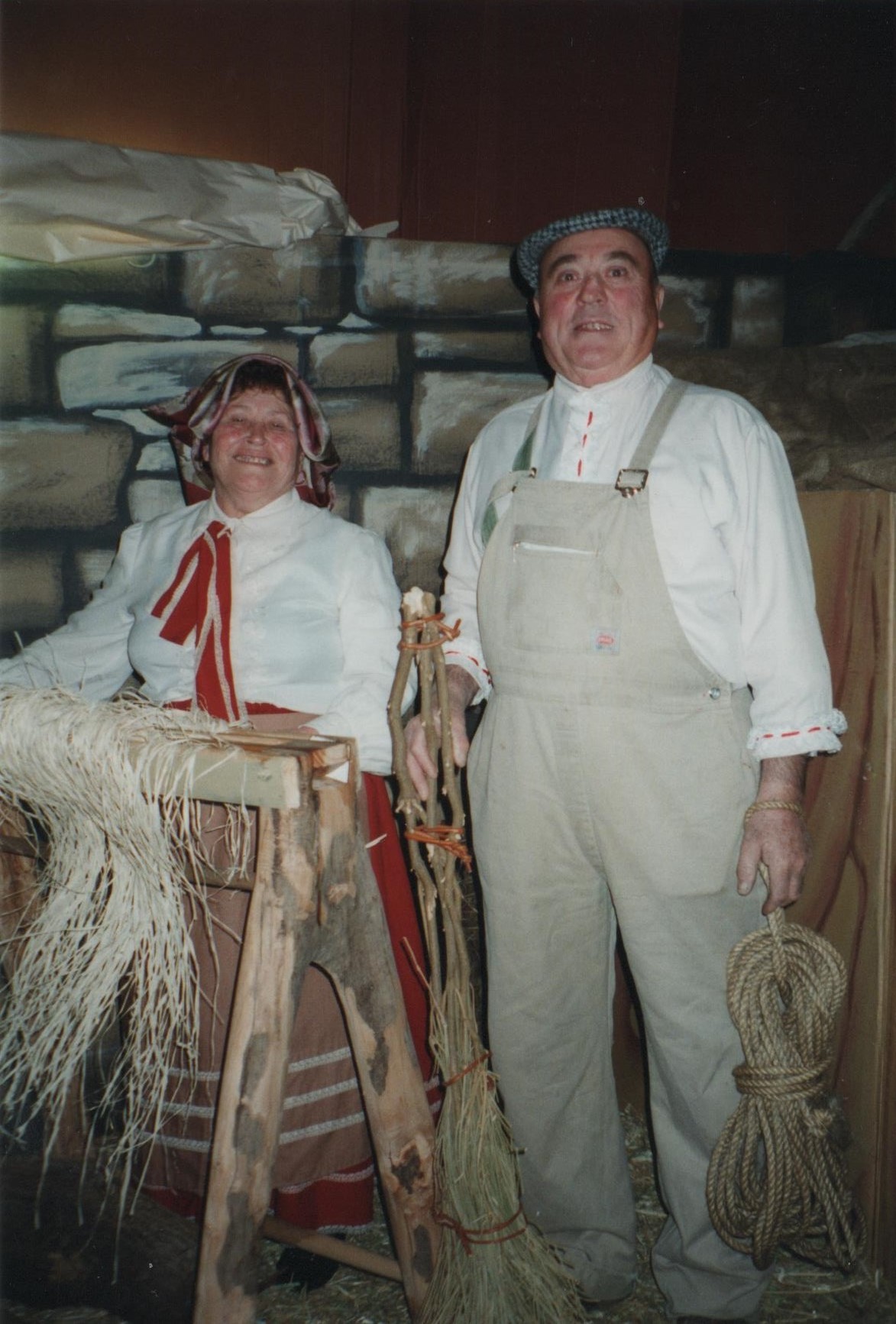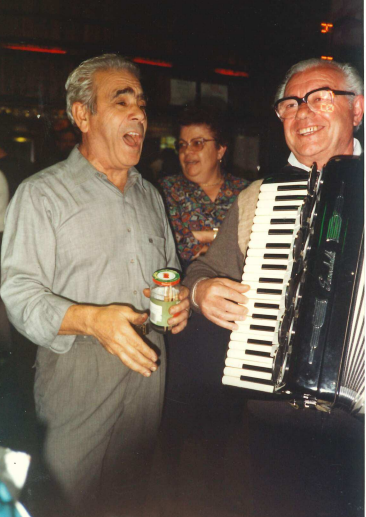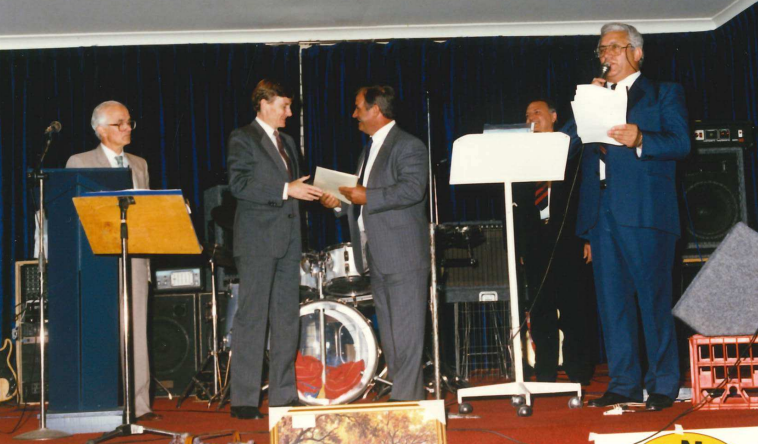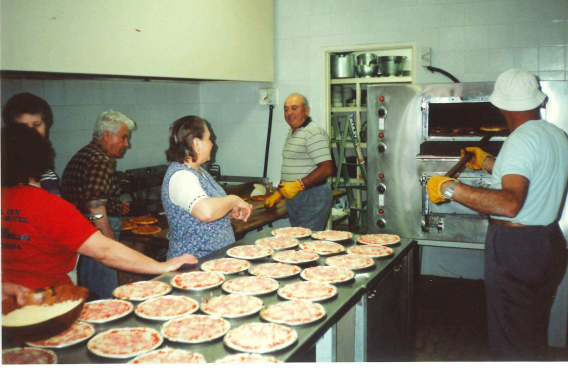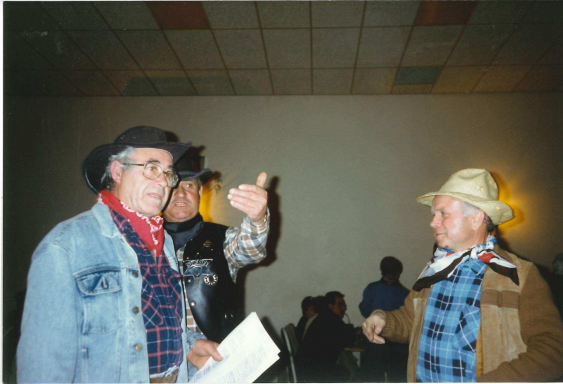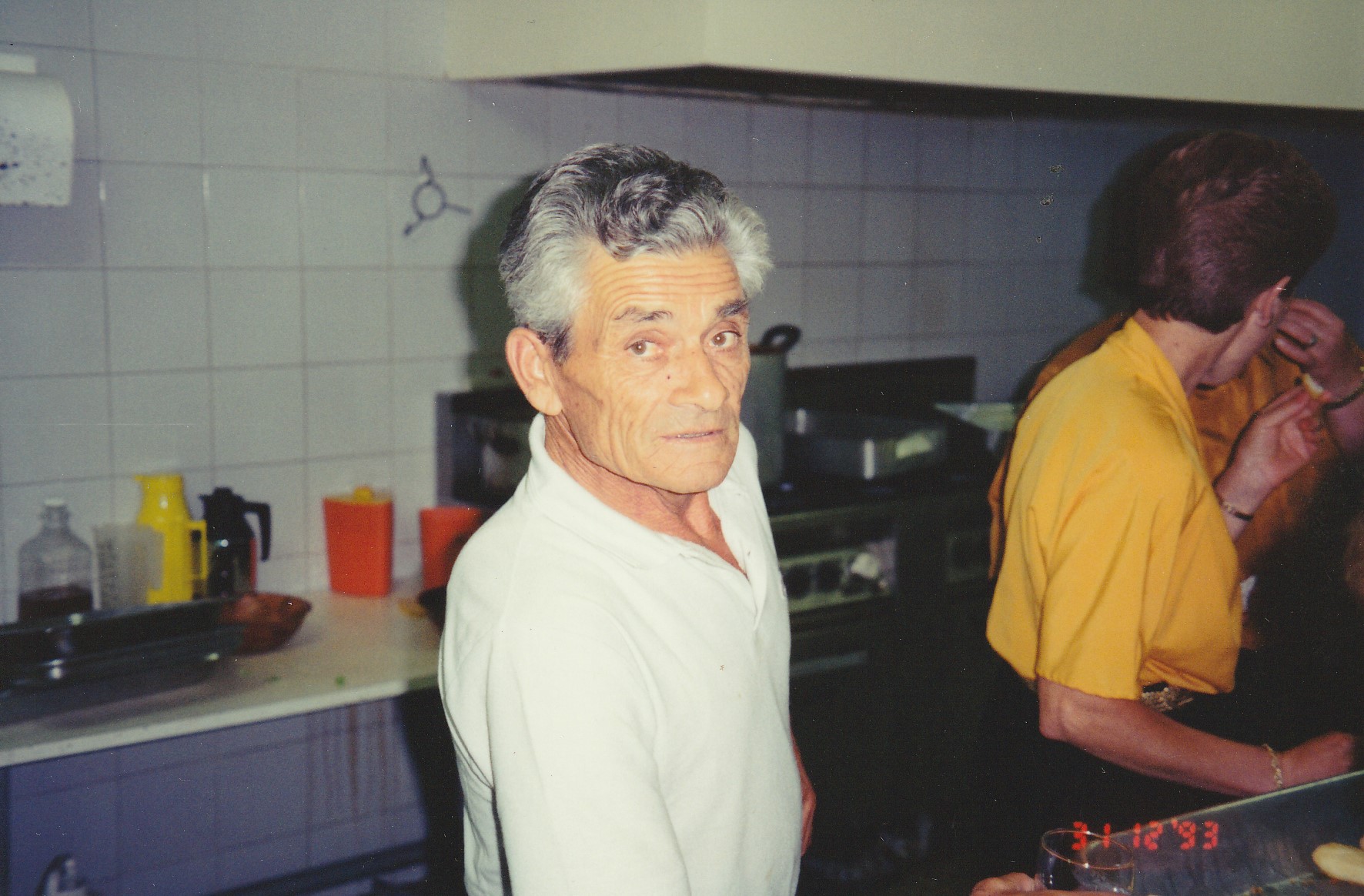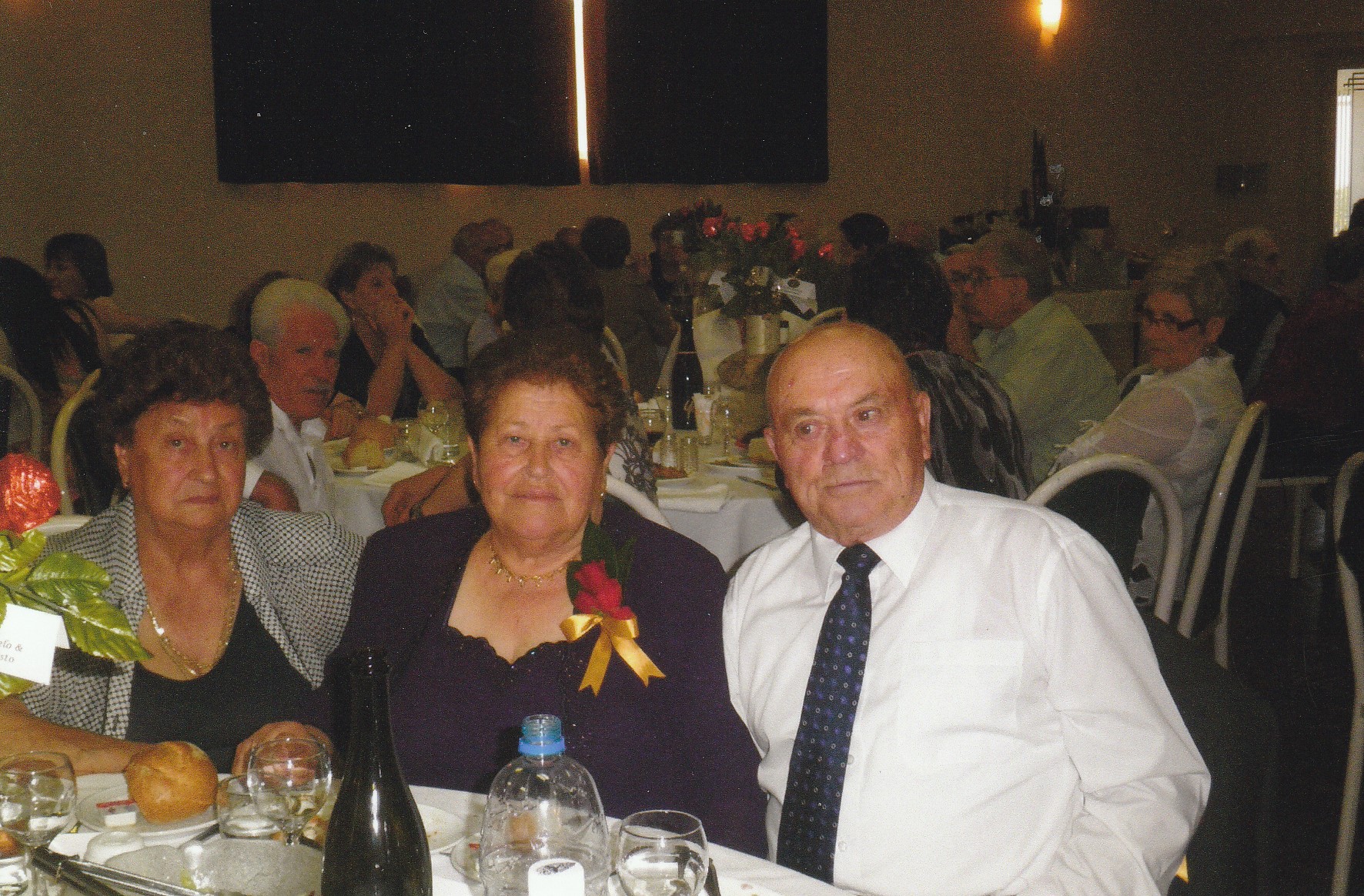During the 1990s the Club was at its peak in attracting member participation, first and second generation. It was in the 1990s that a Consultative Committee was formed to address the changing needs of the Club with a report presented to recommend changes. Thus, the Club would have a new structure, a new image and new direction. The Club would have a board of Directors and seven Convenors each responsible for one area of the Club’s activities. The seven Convenors would cover areas of Club Bar, Social, Sports, Senior members, Youth, Women and Assets & Property. Symbolically, the colours of the Club were also changed to Blue and Gold so they would be in sync with the traditional colours of Molinara, in Italy. By 1992 all sports teams were wearing the new colours. The Club’s new constitution was registered at the Corporate Affairs Commission. The aim was to revitalise the Club.
The Club continued to run functions such as Mother’s Day and Father’s Day Dances, Christmas Carnival, Bus Tours, Country & Western Night, Fashion Parades, Quiz nights, Beatles Night, Wine & Cheese Tasting night, Sports Presentation Evenings, Easter picnics often hosted by Donolga Winery and special food evenings that were tied to traditional Molinarese foods such as Cavatelli, Spighe & Castagne. The Club continued to be involved in the Italian Festival ‘Carnevale’. In 1997 the Club participated in Italian Festival Carnevale parade through the streets of Adelaide. Members and their families dressed in traditional costumes and floats were constructed; the Club was awarded the Fulvio Pagani Prize for the best float.
In 1992 the club celebrated its 20th Anniversary, the celebrations were a true celebration of what the club had achieved with Past Presidents and Life Governors in attendance. In 1993 the Club underwent refurbishment and the Molinara Club managed to pay off their loan, so it was now fully owned by its members. In 1997 policies were written for the running of the Club so that a strong vision would be created for the future, this would form the foundation for the Club beyond 2000. In 1997 the Club also celebrated its 25th Anniversary at a function held at the Club. The function was well attended with dignitaries such as Mr Mike Rann – Leader of the Opposition, Mr John Cummins – State Member for Norwood, Ms Johanna McLuskey – Mayor for Pt Adelaide & Enfield, Mr Michael Atkinson – Shadow Minister for Ethnic Affairs and Ms Vinnie Ciccarello – Mayor for Kensington & Norwood.
The Sports Programme continued to be a big part of the Club in the 1990s, participants were members and friends. Bocce had many participants and they competed for seven cups during the year and members also took part in State Competitions. Molinara Club also fielded a number of sporting teams in netball, soccer, volleyball and ten pin bowling. In 1990 the Club also held the ‘inaugural’ MSSC Spring Golf classic, it was held at Highercombe Golf Course and 25 players participated.
The newly formed Youth group assisted with club functions. They also organised social activities and fund-raising activities such as a car wash.
The Women’s group were active in organising activities for the female members of the Club and Tuesday nights were dedicated to Aerobics classes held at the Club. Christmas Carnivals continued to be held with activities for children and carols by candlelight sung in English and Italian and the visit by special guest Father Christmas.
The ‘Anziani’ members group continued to have lunch every second Tuesday, enjoying food and social activities. During 1990 the group had two visits from Commendatore Cirocco and his wife, and a visit from Premier Bannon. During the Grand Prix a group of senior members were invited to attend the race as invited guests of Giuseppe Emanuele and this was a real treat. The ‘Anziani’ group often hosted guests that were Molinaresi visiting Adelaide from Canada, Argentina, Switzerland and Molinara.
The Cultural group made plans for a photo & documents exhibition of Molinara and the Molinaresi. This would be displayed during the 1992 Italian Festival and in the clubrooms. A book was planned to document the Immigration of Molinaresi to Australia, the research continued during the ‘90s. In 1993 the exhibition came to fruition and it was titled Molinara” An Italian Village in Adelaide “and it was officially opened by the Honorary Lynn Arnold, Premier of South Australia. In 1999, the Cultural Committee organised a function to honour the ‘Classe ‘38’ for those that turned 60 in 1998. Molinara Communal Archives show that in 1938 there were 86 births, of these 21 migrated to Australia.
During 1990, the former Mayor of Molinara, Commendatore Rocco Cirocco and his wife Immacolata Cirocco visited Adelaide and the Club. Rocco Cirocco served in his position as Mayor for 29 years, from 1952 – 1980, he steered the village through the post war years, the 1960s earthquake and the rebuilding of the village. Commendatore is a title for a civilian awarded as an honour by the President of the Republic of Italy in recognition of his service. Commendatore Cirocco is one of the most respected and honoured ‘paesani’ of Molinara. The luncheon on his behalf was well attended and Commendatore Cirocco delivered a truly emotional speech reducing many members to tears. He acknowledged the sacrifice of the migrants in leaving their homeland and the huge success they had achieved in Australia, socially and economically. Since he had signed passports for many of the migrants that came to Adelaide, he was curious to see what had become of them. He was overwhelmed with their hospitality and the socio-economic position he found them in. In the same year the ‘Anziani’ luncheon was attended by a delegation of South Australian politicians who travelled to Naples to sign the ‘Gemellagio Agreement’ between South Australia and the Campania region in Italy. The delegation was able to visit Molinara and John Bannon, Premier of South Australia was part of the delegation. Premier Bannon attended the luncheon and he gave a great speech on the good time and food he had in Molinara in the company of our Life Governor Joe Emanuele.
The club consisted of 343 members, made up of two Life Governors, 199 Life members and 132 Ordinary members, this was an increase in membership. By 1997 the number of ordinary members started to diminish, and this was a concern regarding the future of the Club. Efforts would be made to attract more active members, especially in the 30 – 40 age group.
Historical Context
In the 1970s and beyond, as what Italian-Australian journalist Pino Bosi called the “ethnic era” dawned, Italian immigrants became the “exemplar minority community.” As Australians embraced the policy of multiculturalism, there was a re-valuing of ethnicity. Cultural difference, once a problem to be erased, was now a feature to be celebrated. Italians became arguably the most lauded group in the new multicultural Australia, their culture the most feted. Italian food, which had already benefited from the romantic and glamorous associations that the idea of Italy held in Australia, further increased in status. It came to signify not only glorious and glamorous Italy, but the sustenance of a people who had, for want of a better word, become fashionable in Australia for the first time. Italian ethnicity was no longer a liability for Italian migrants: it could now be used to their advantage. In the 1970s and beyond, as Australia re-positioned itself as a multicultural and cosmopolitan society, the Italian migrant became not just an acceptable migrant, but an exemplary one.
Presidents
1990 Donato Cirocco
1991-1993 Cosimo Cirocco
1994 – 1996 Nicola Cirocco (OAM, JP)
1997-1998 Bill Cirocco
1999- John Girolamo
